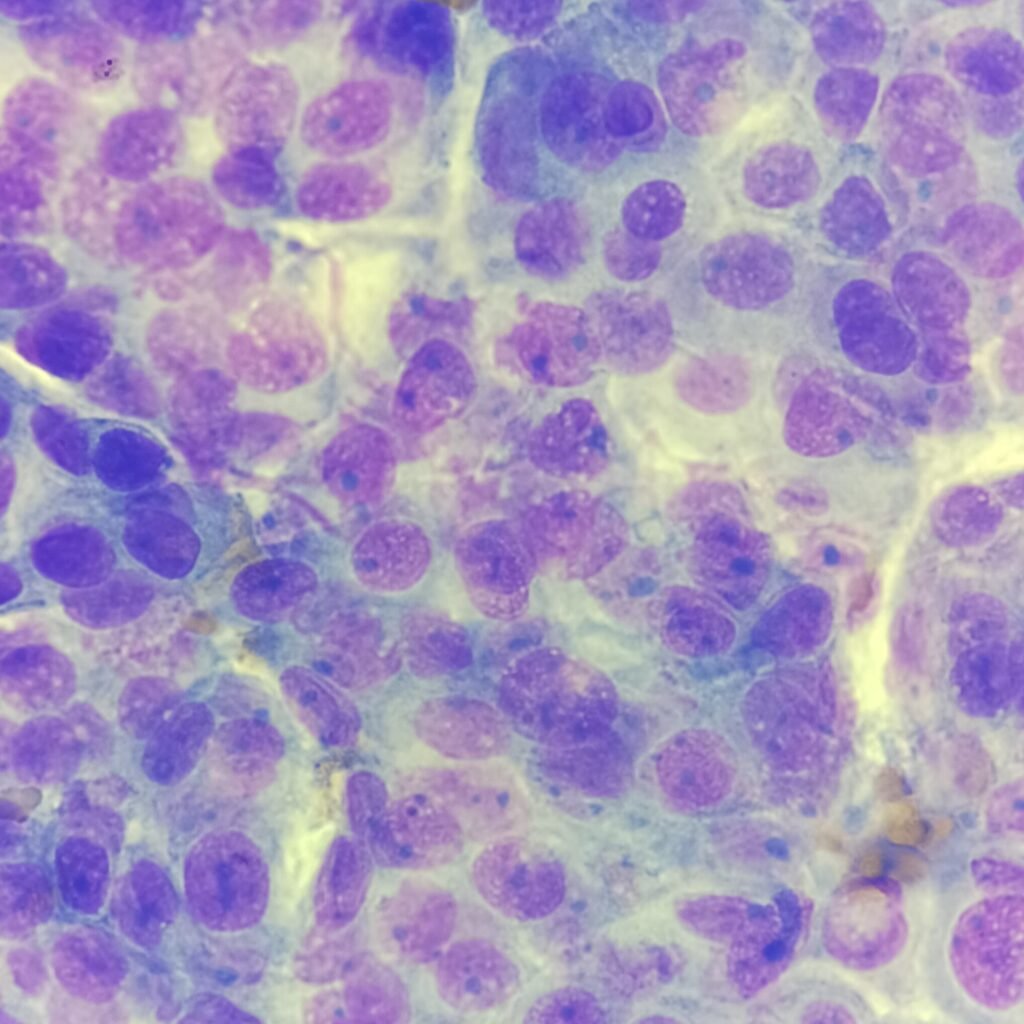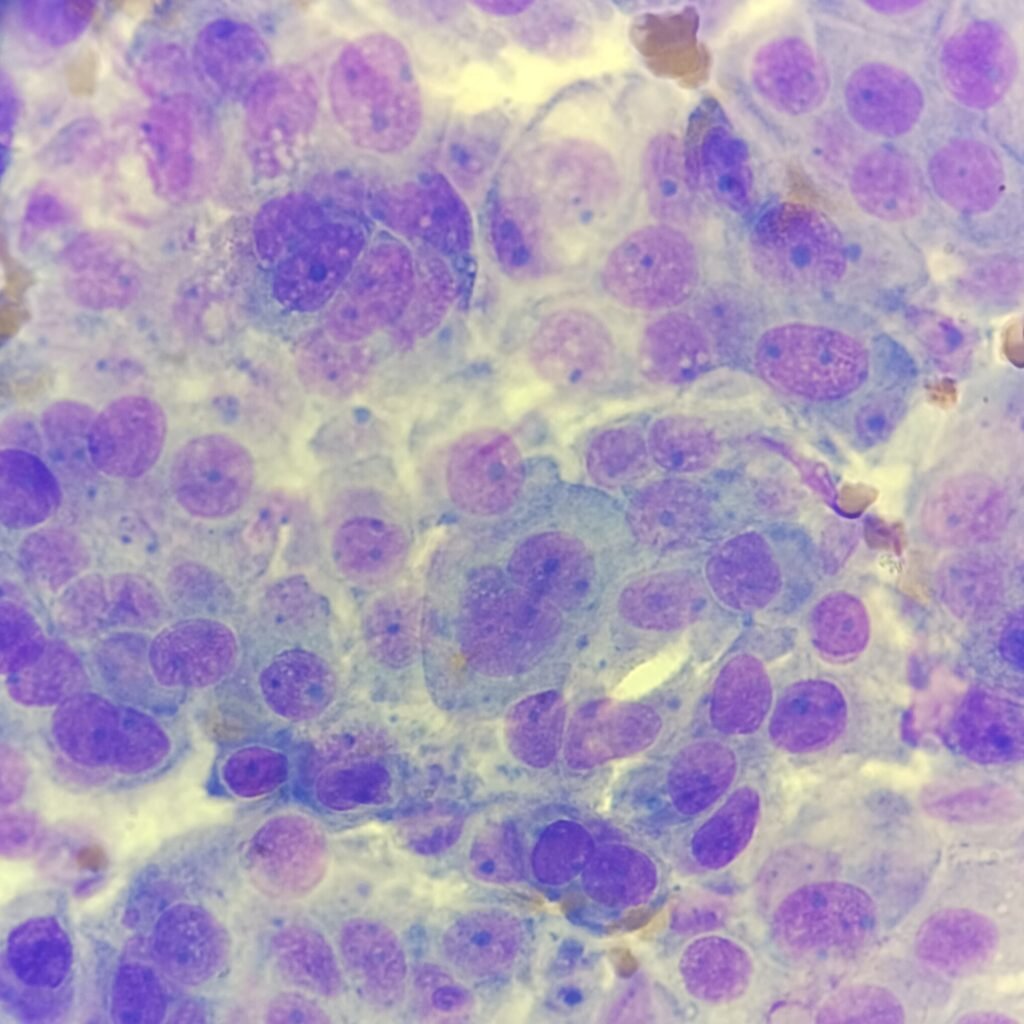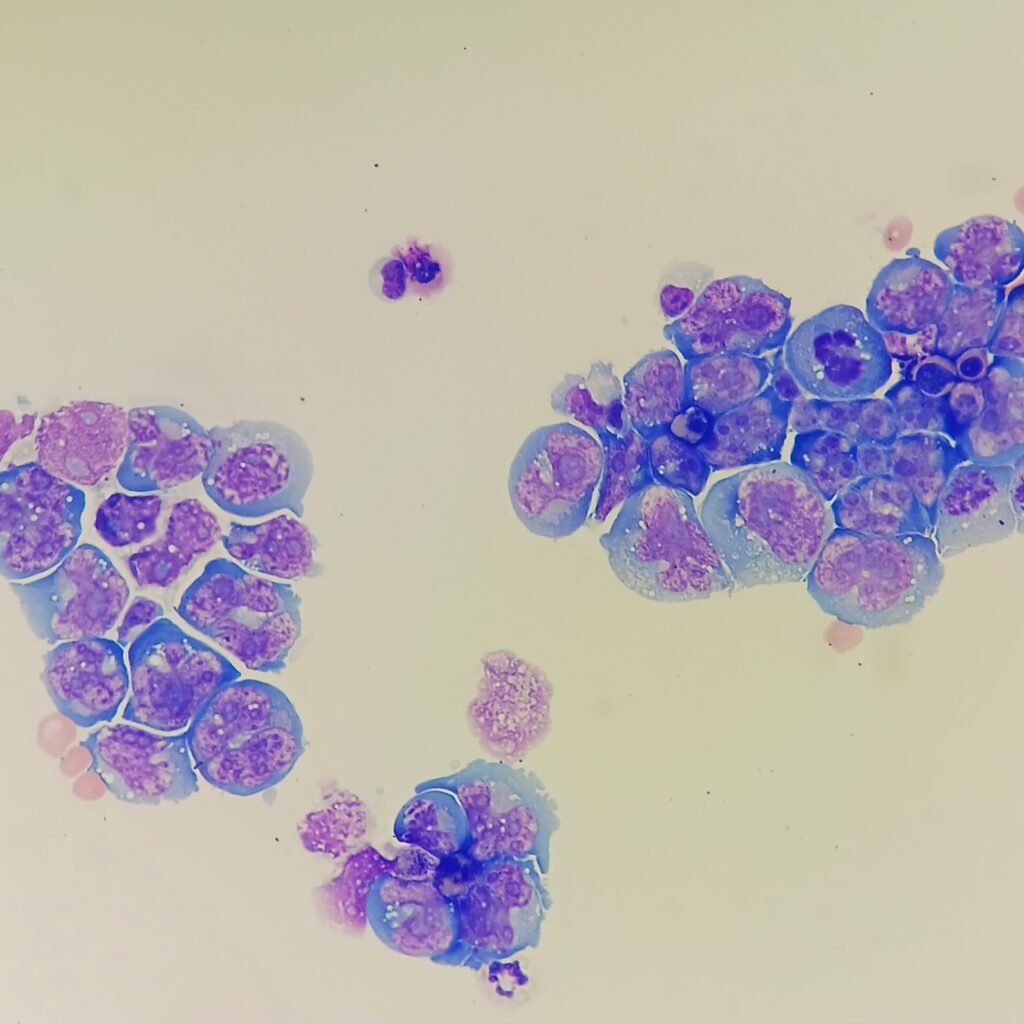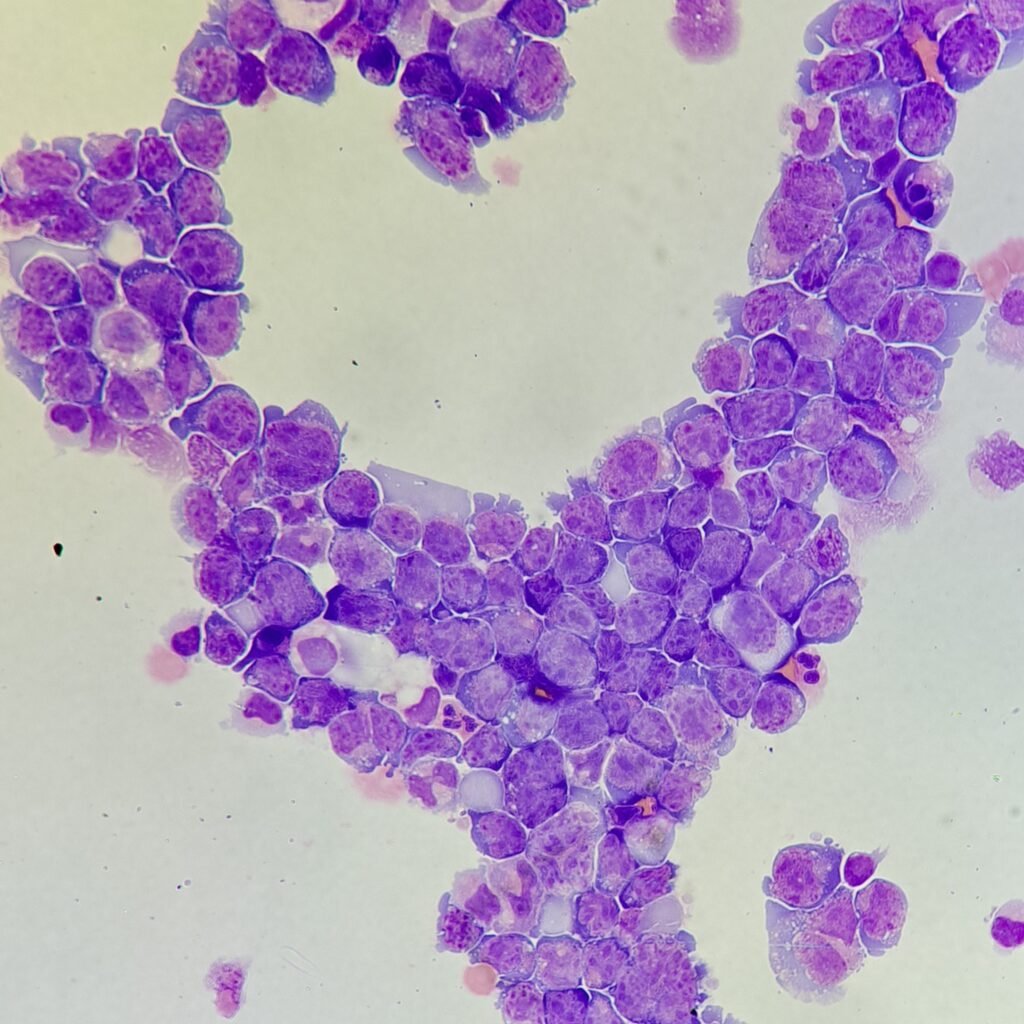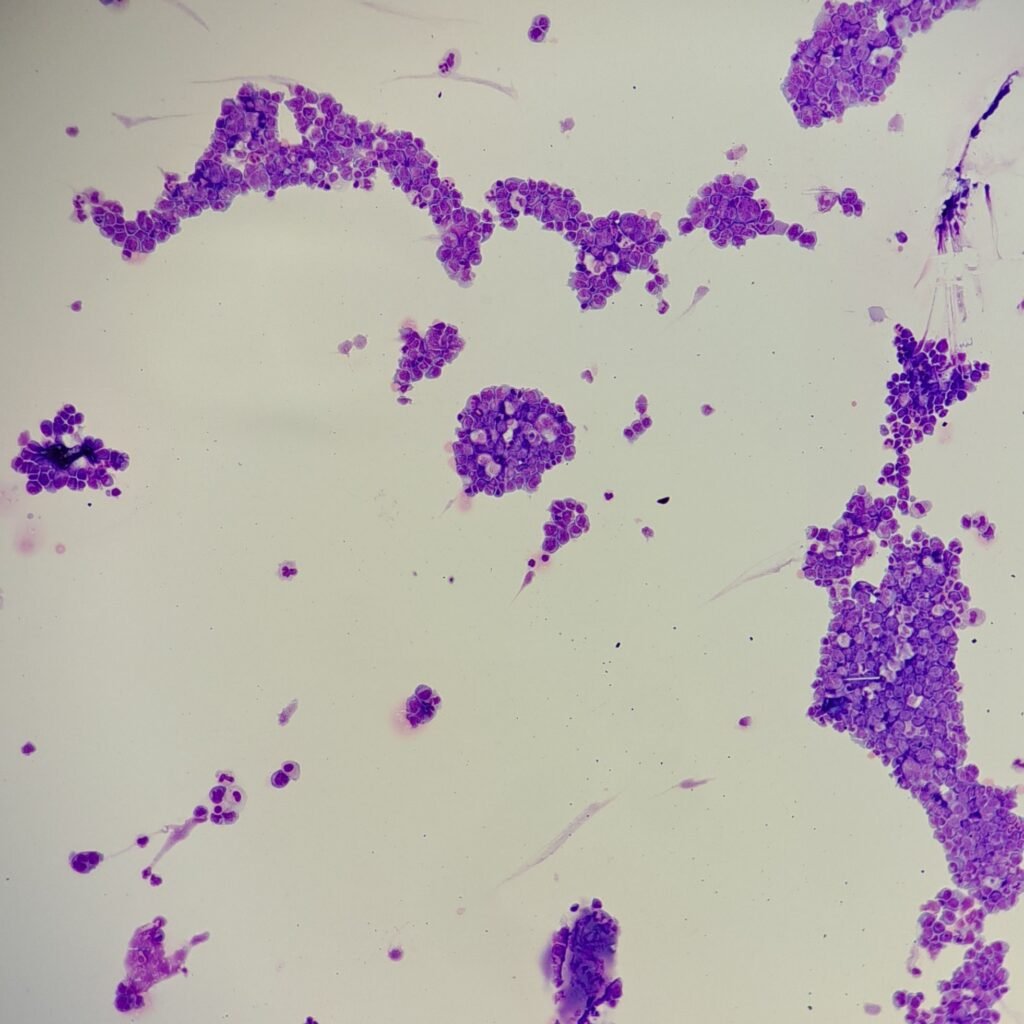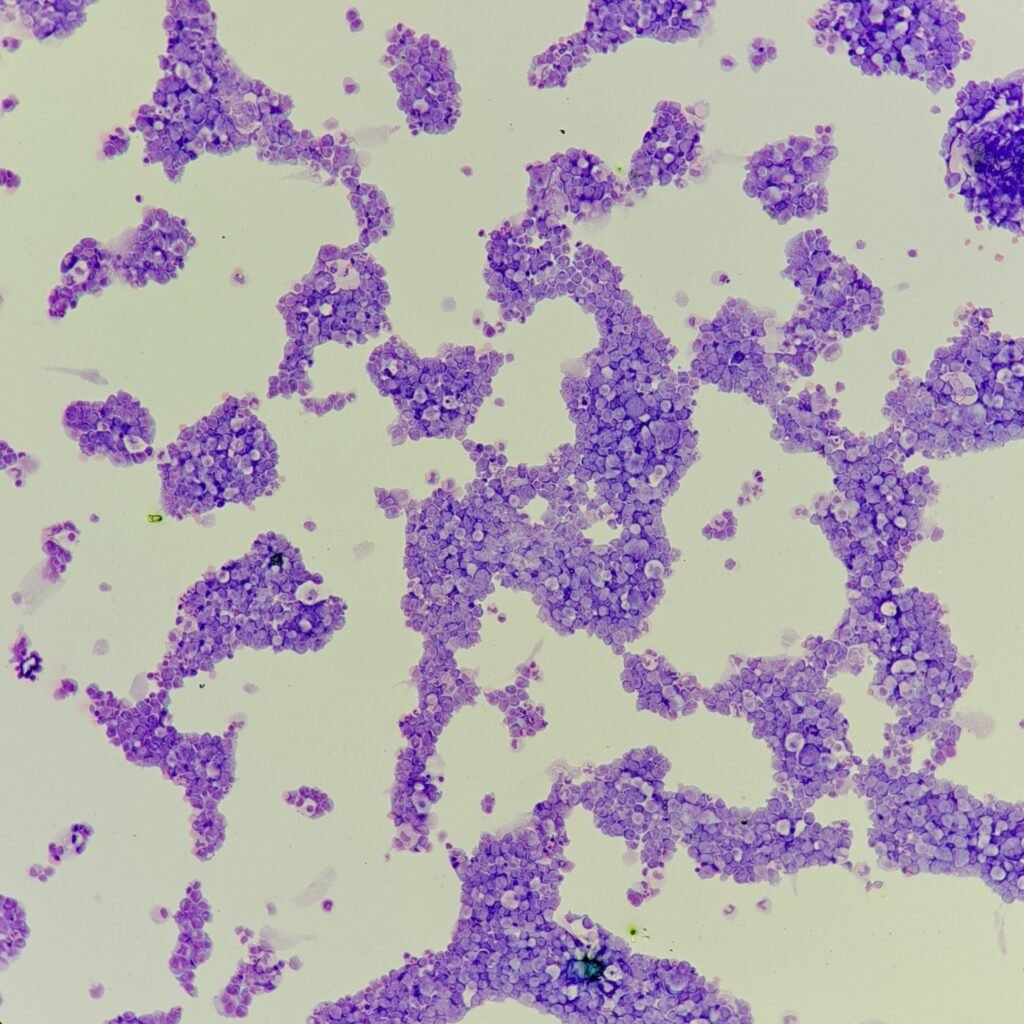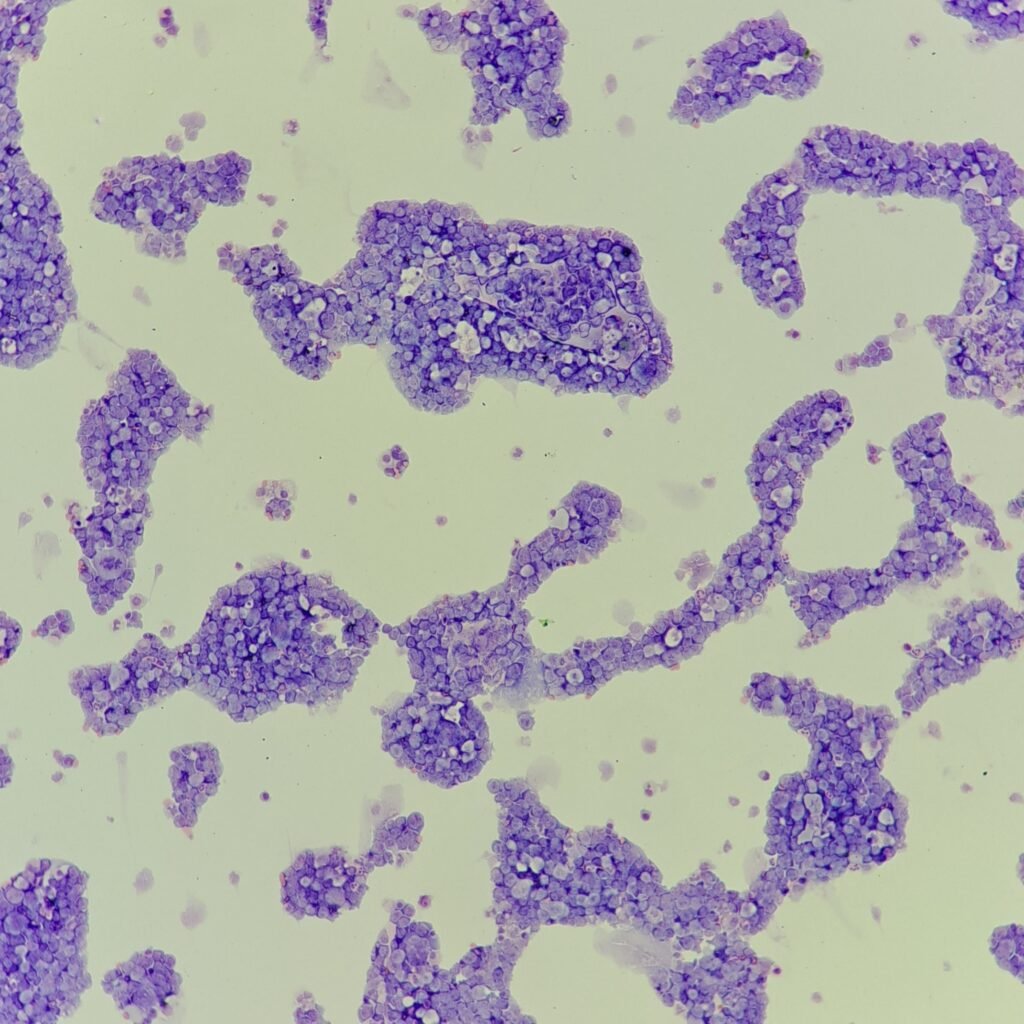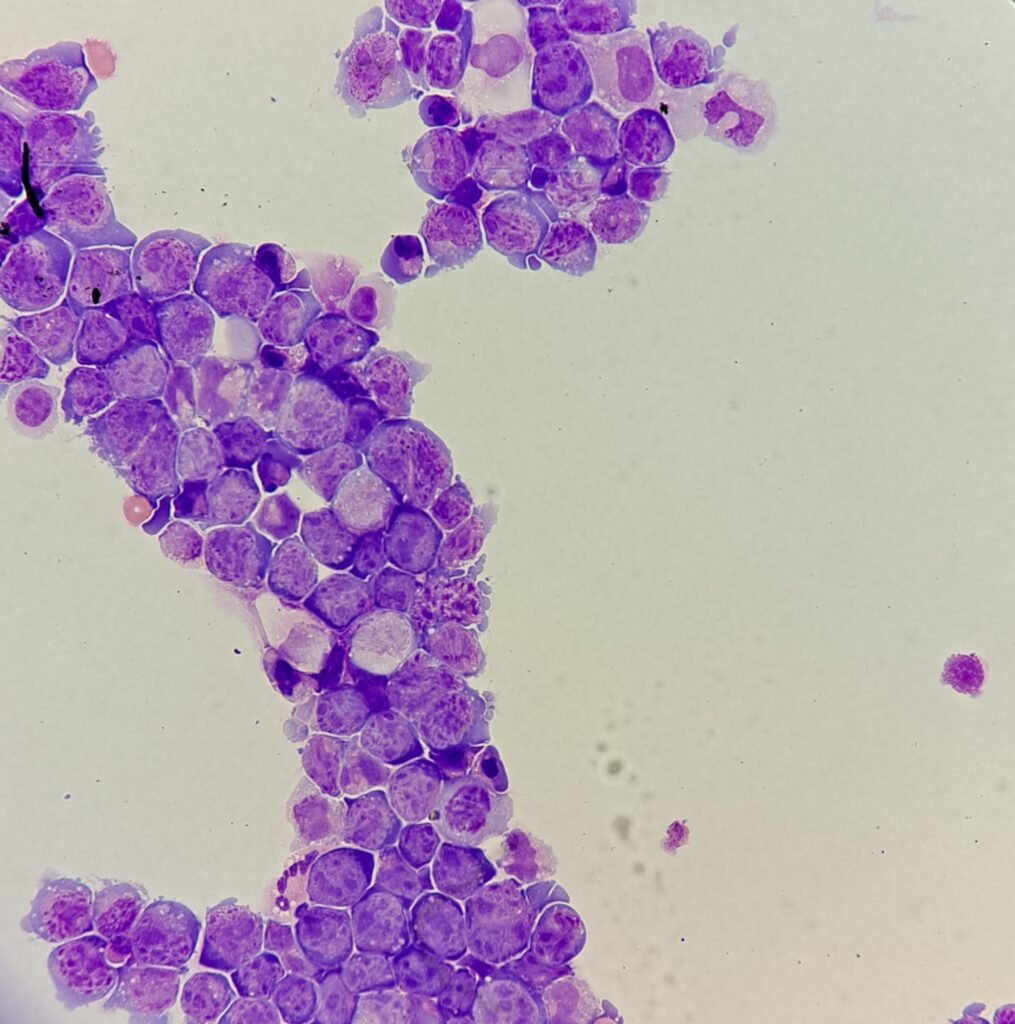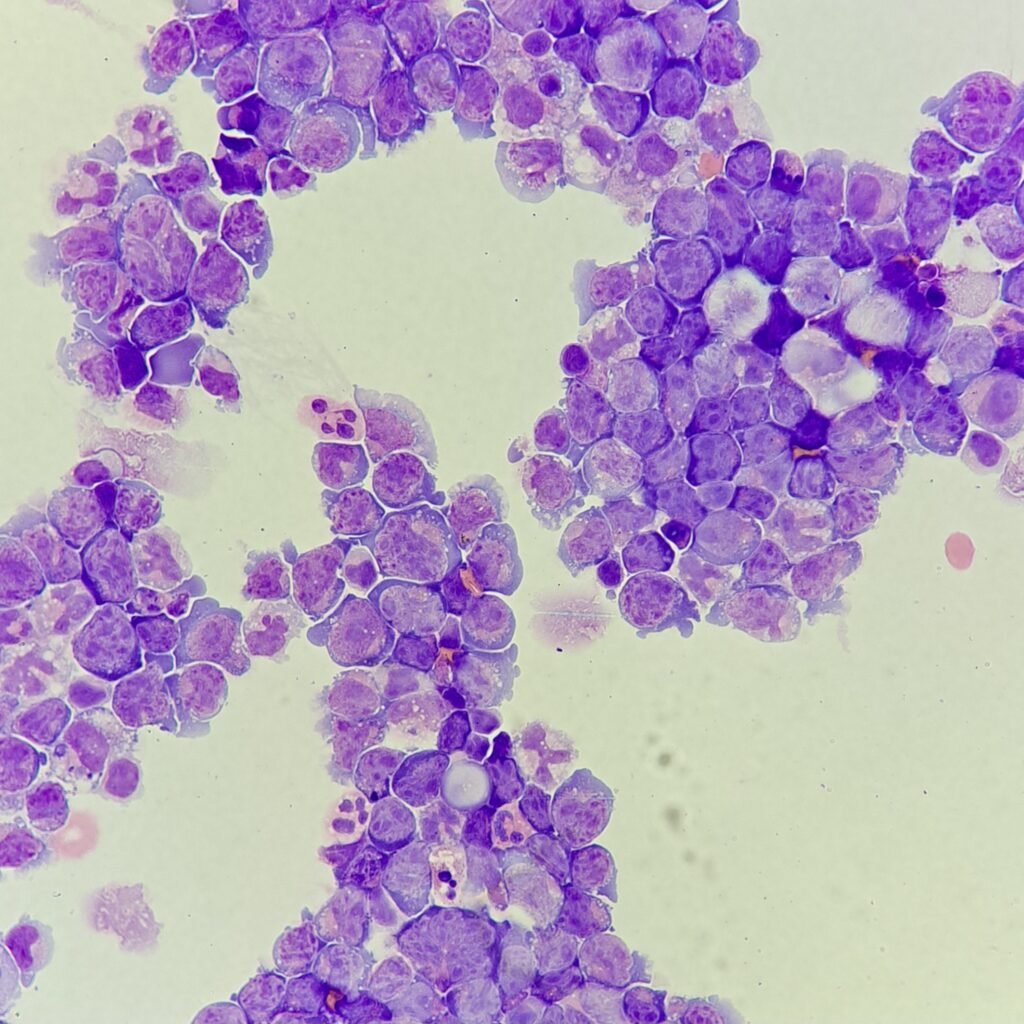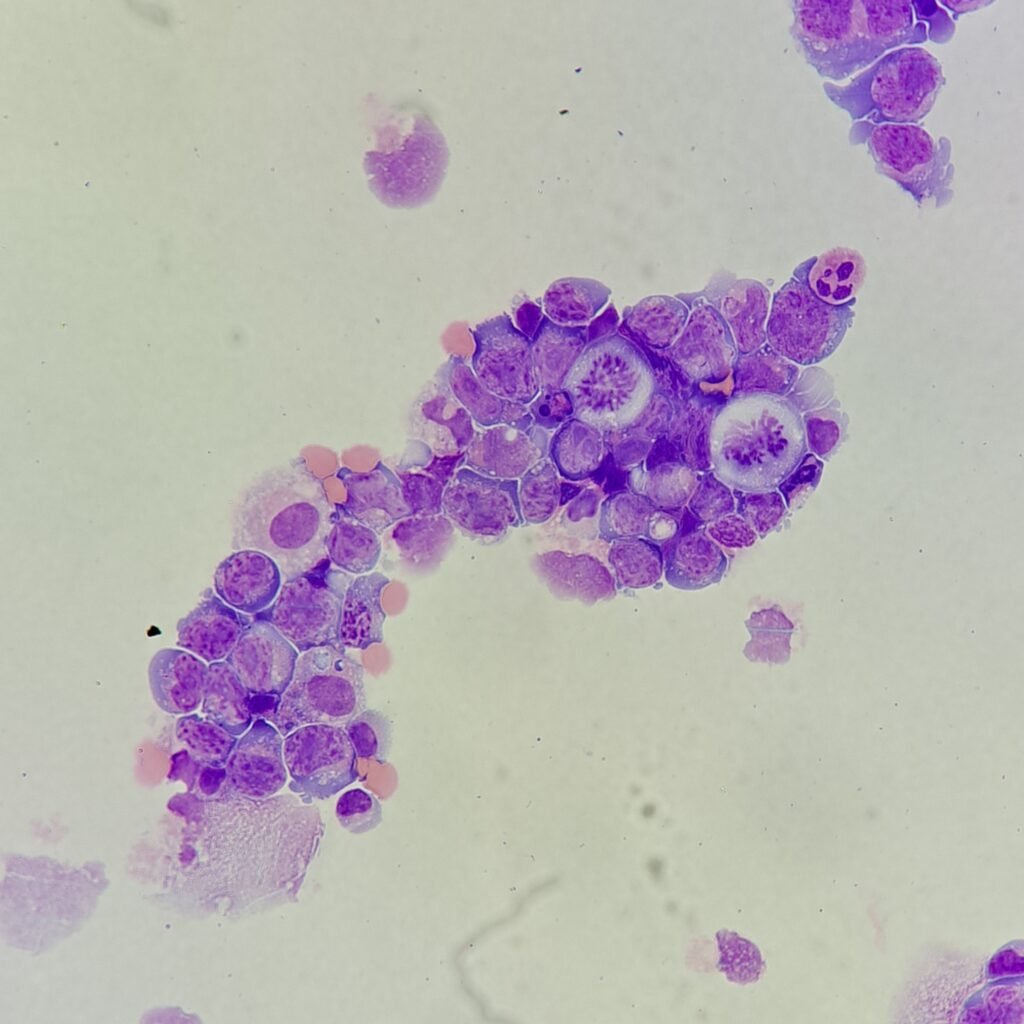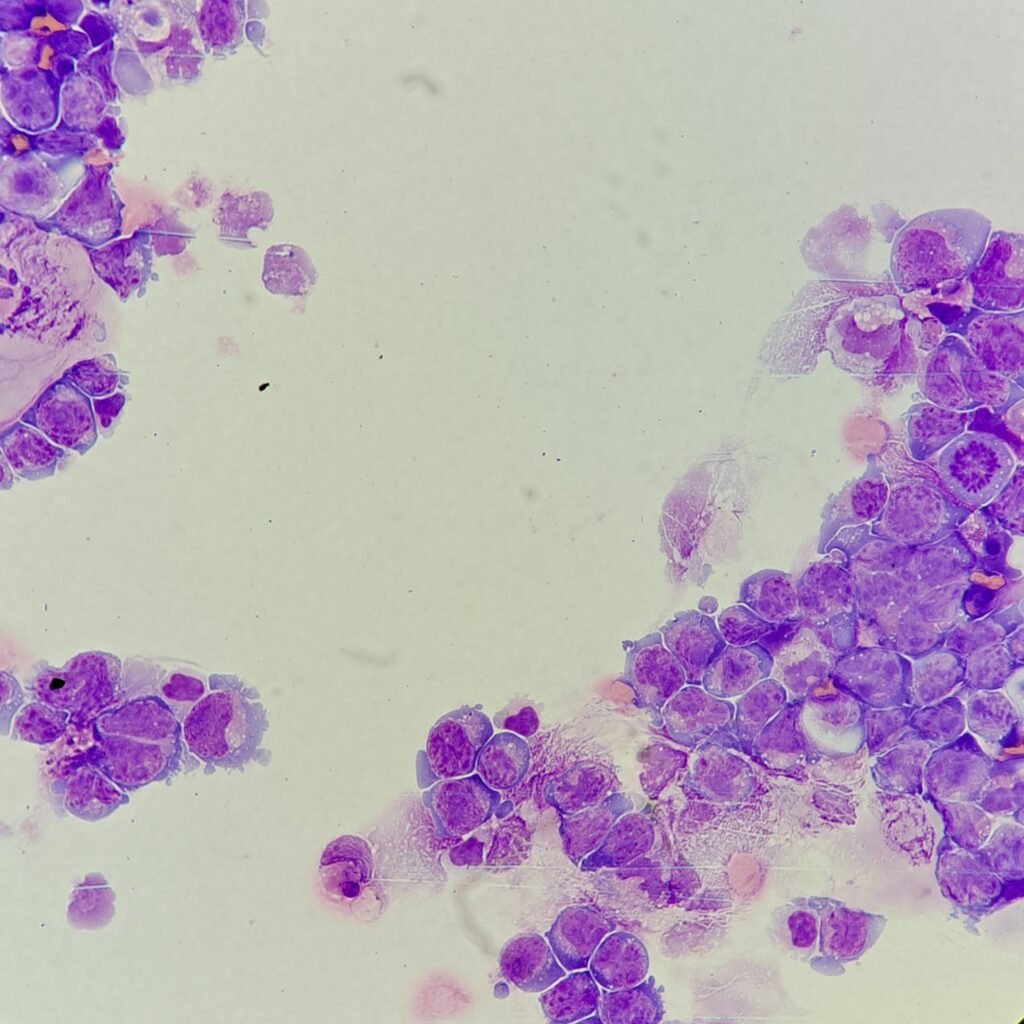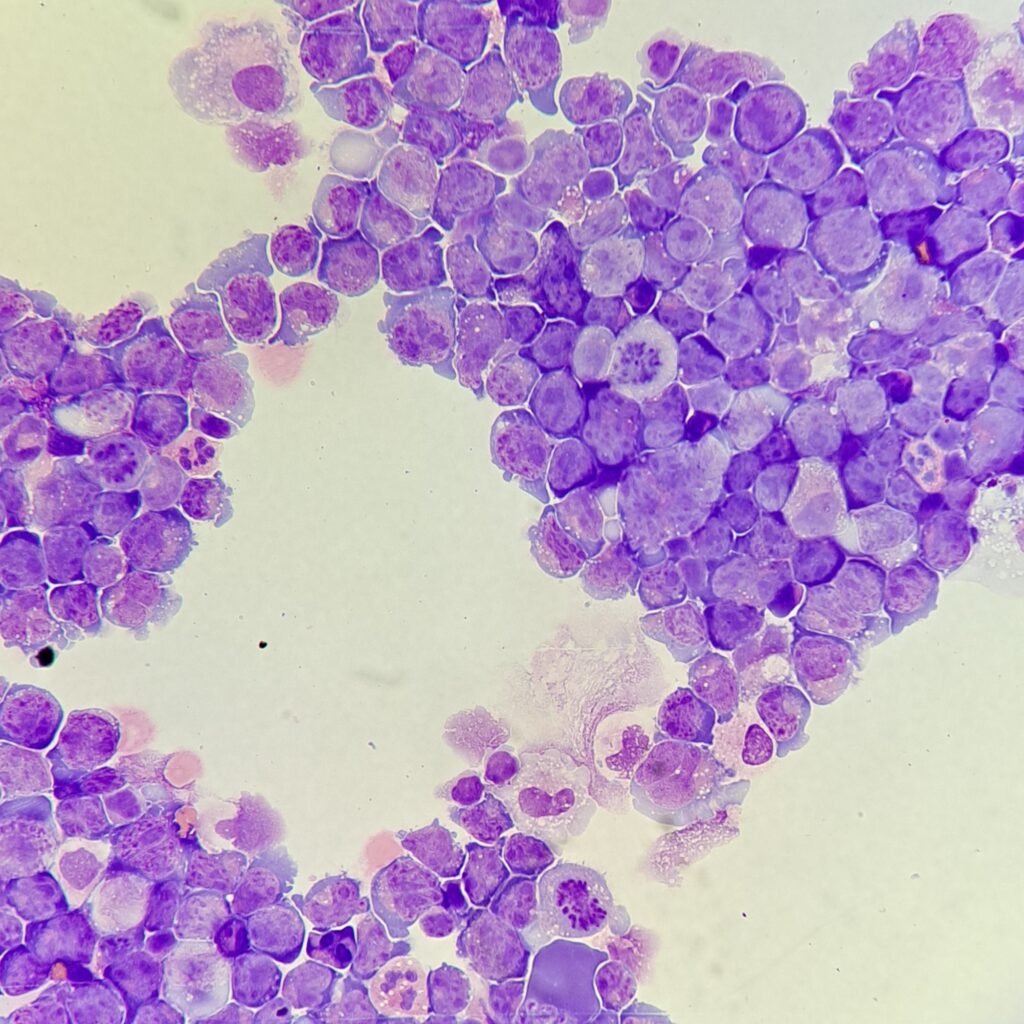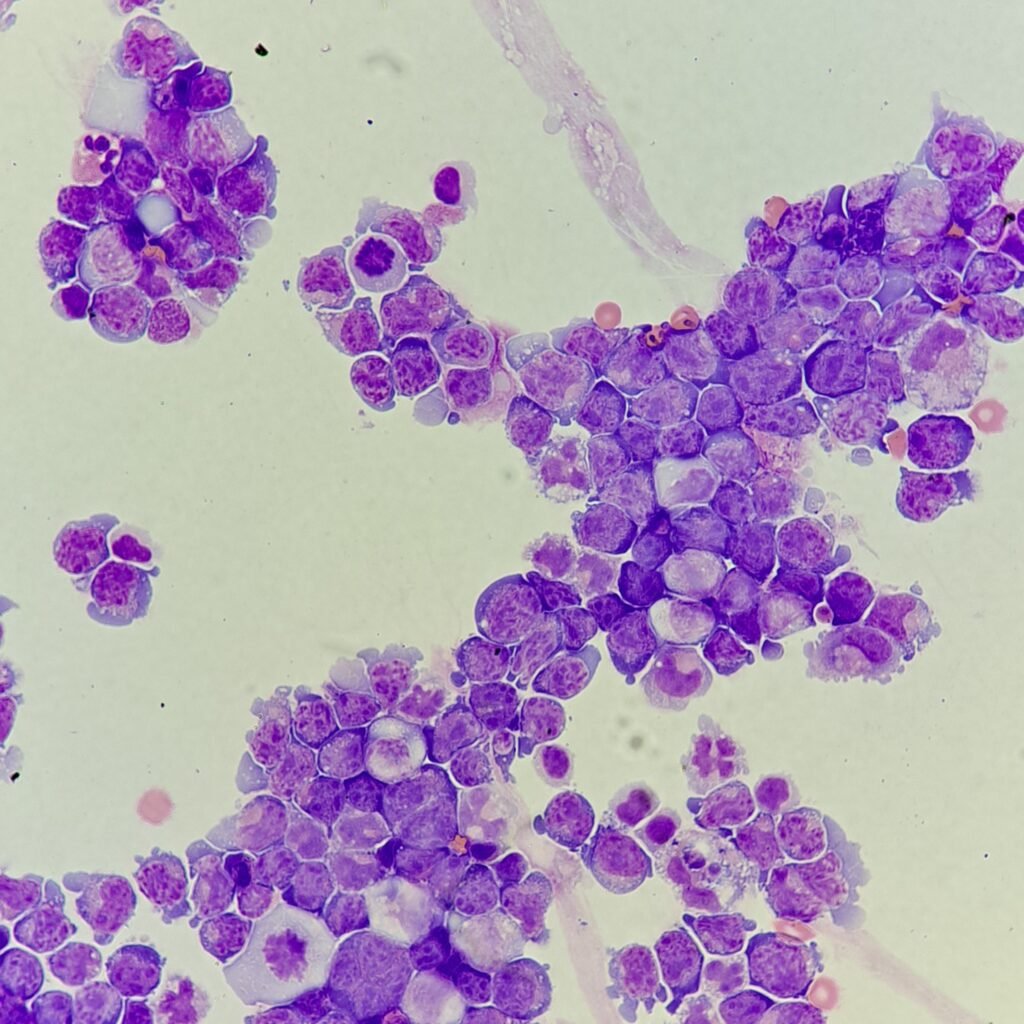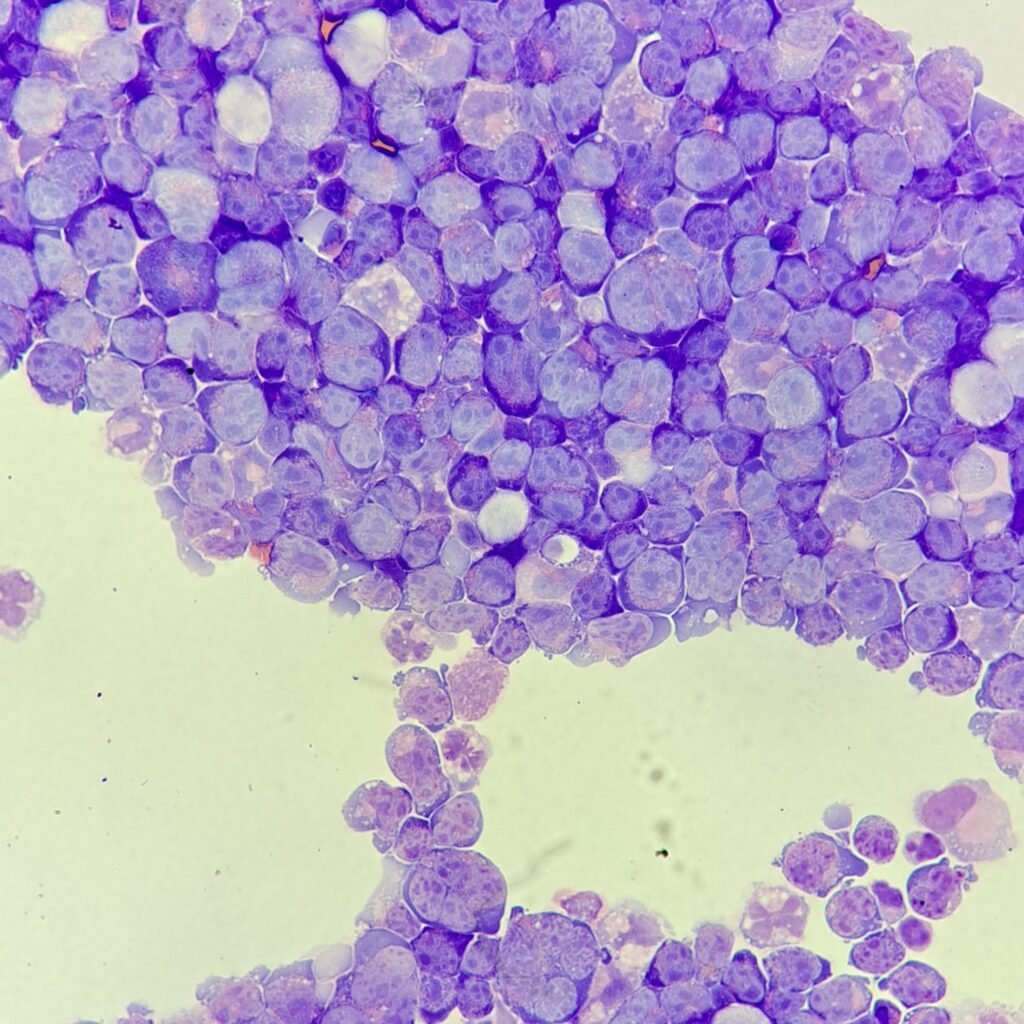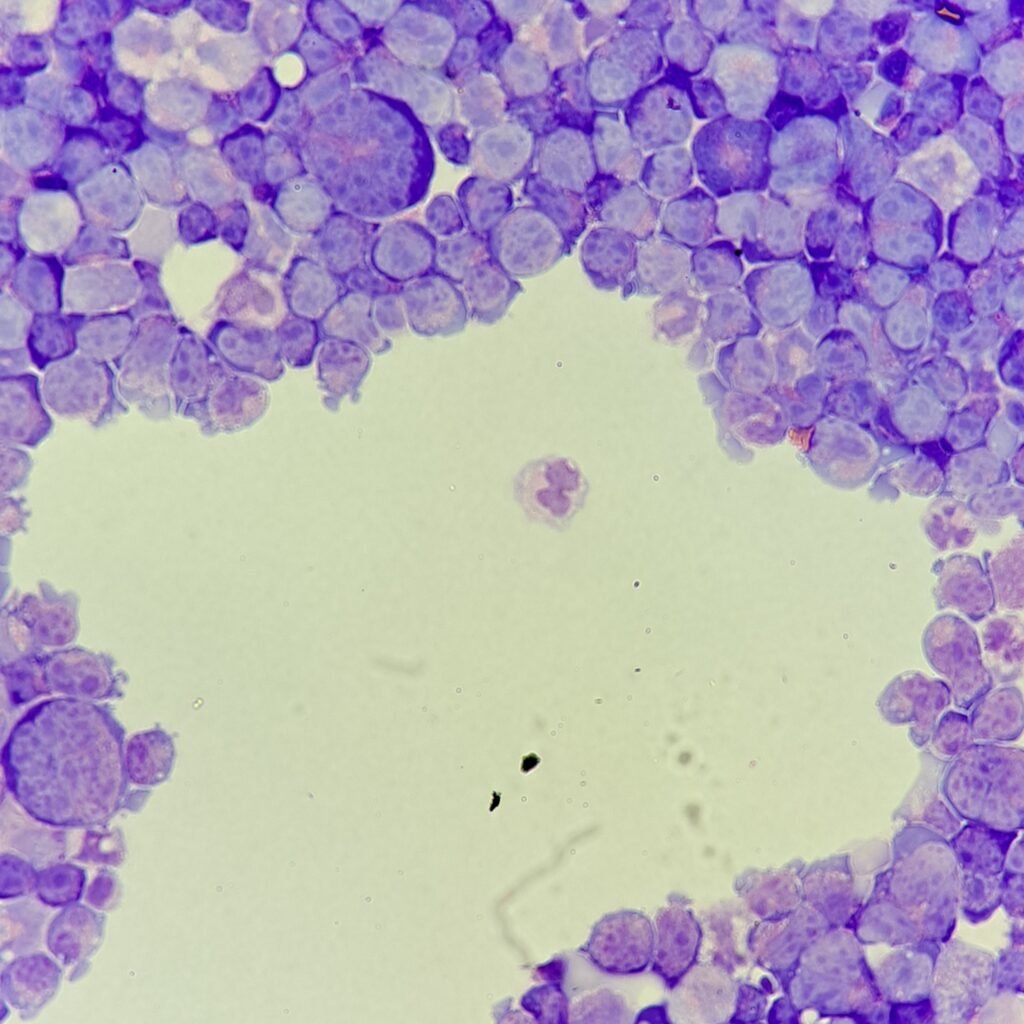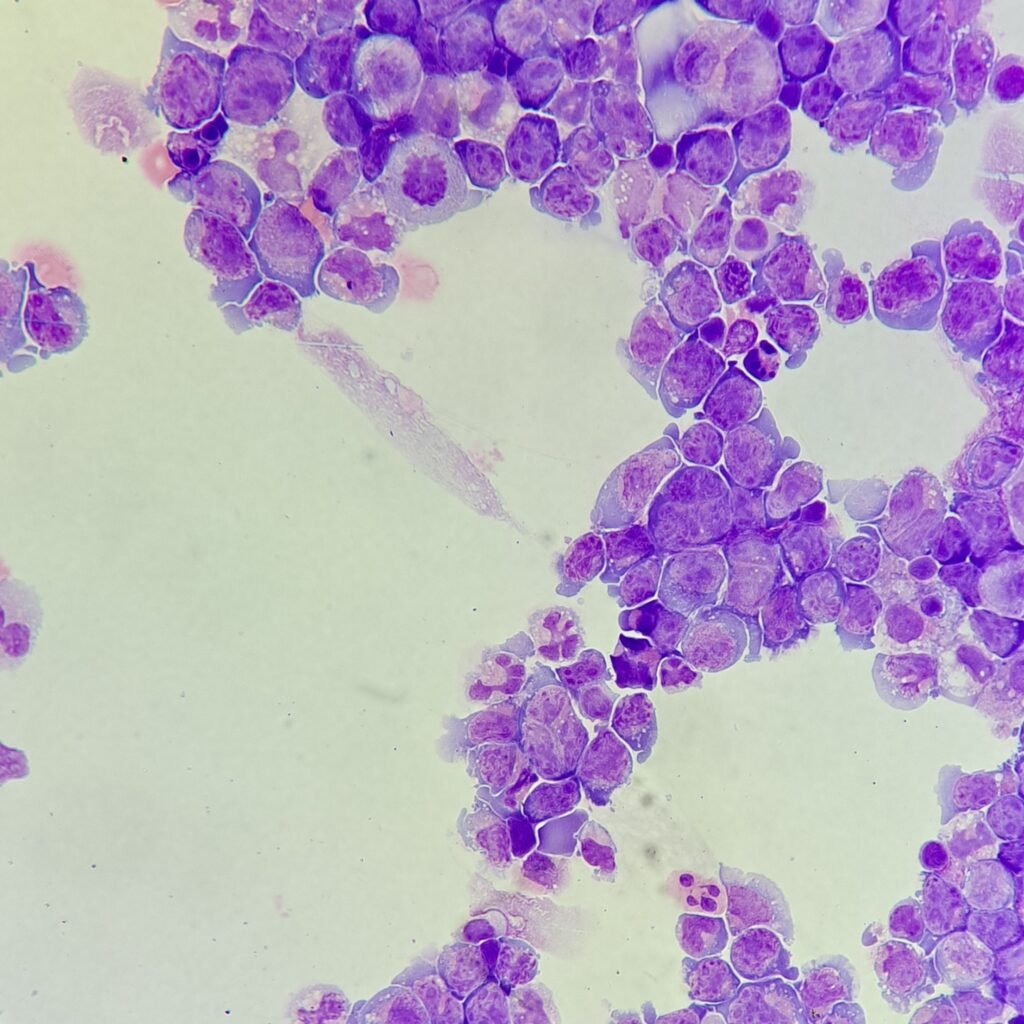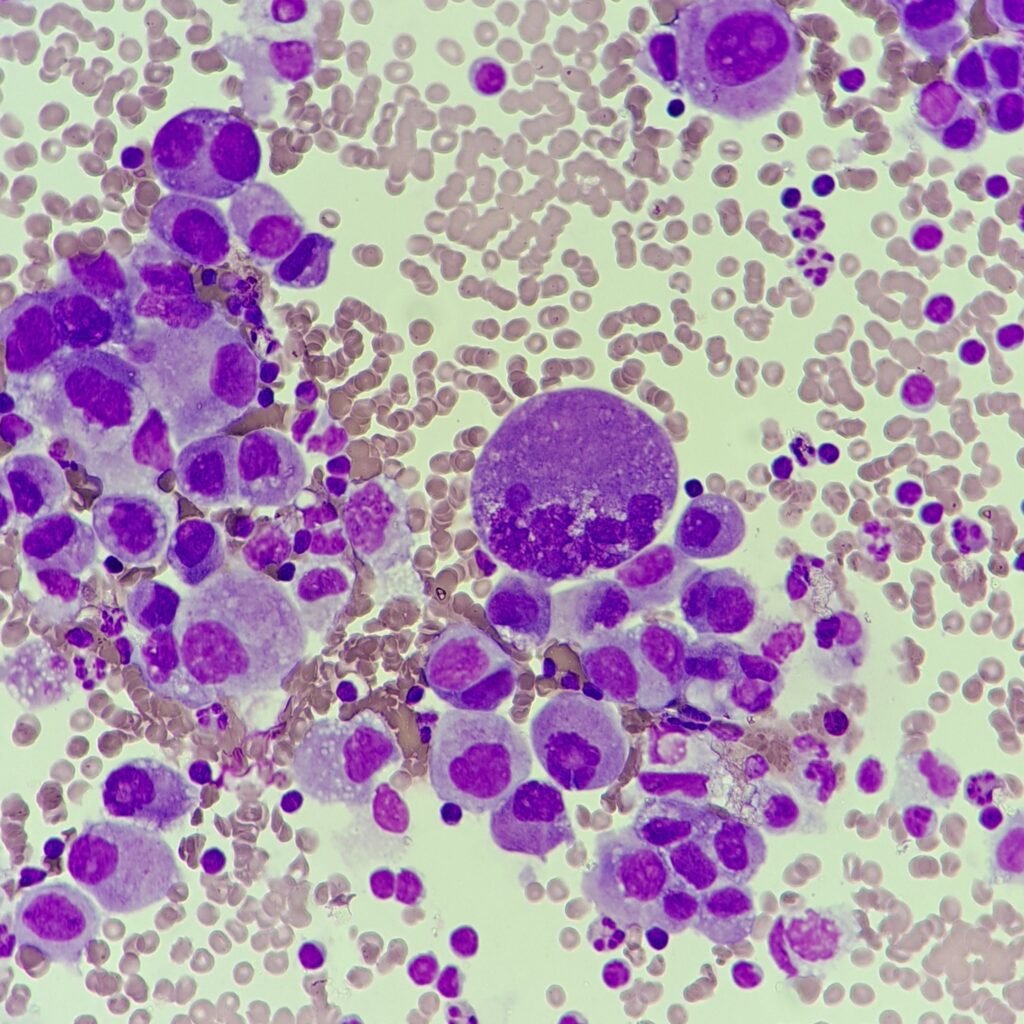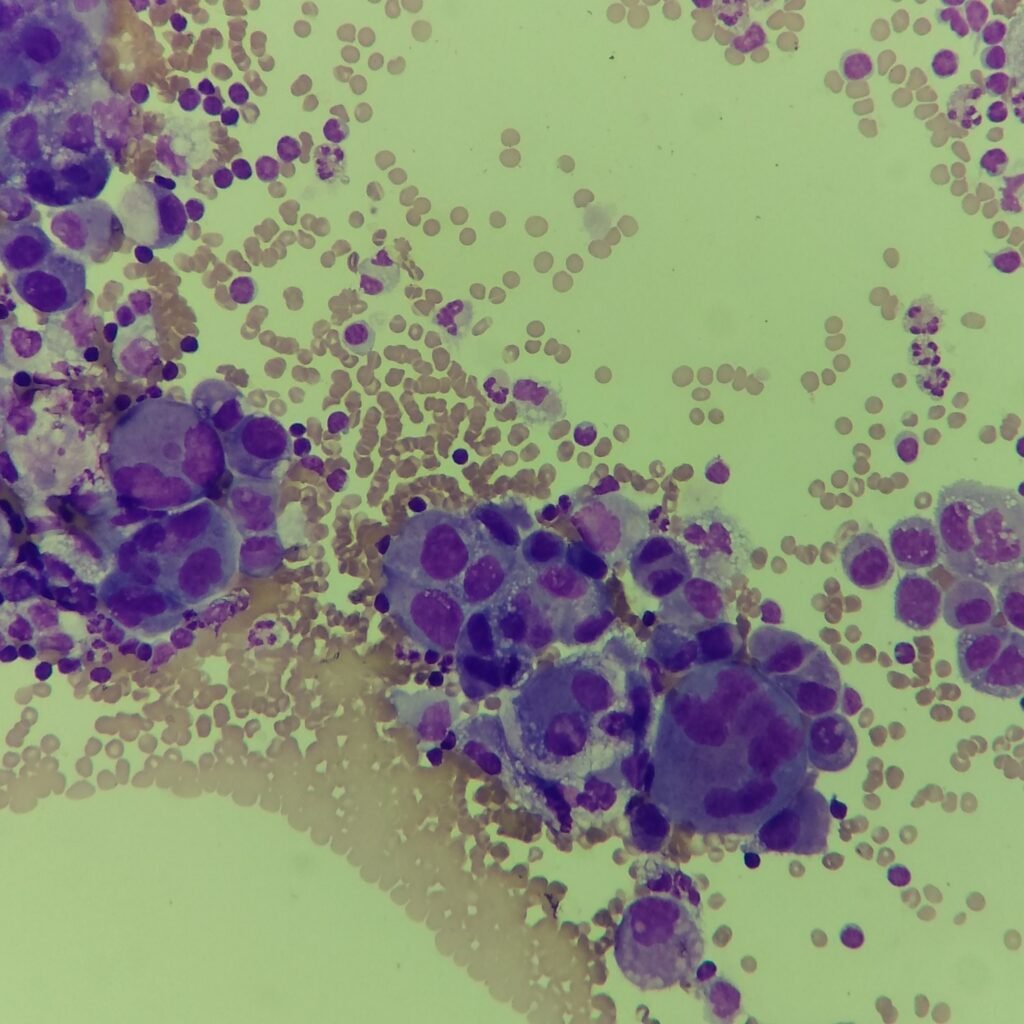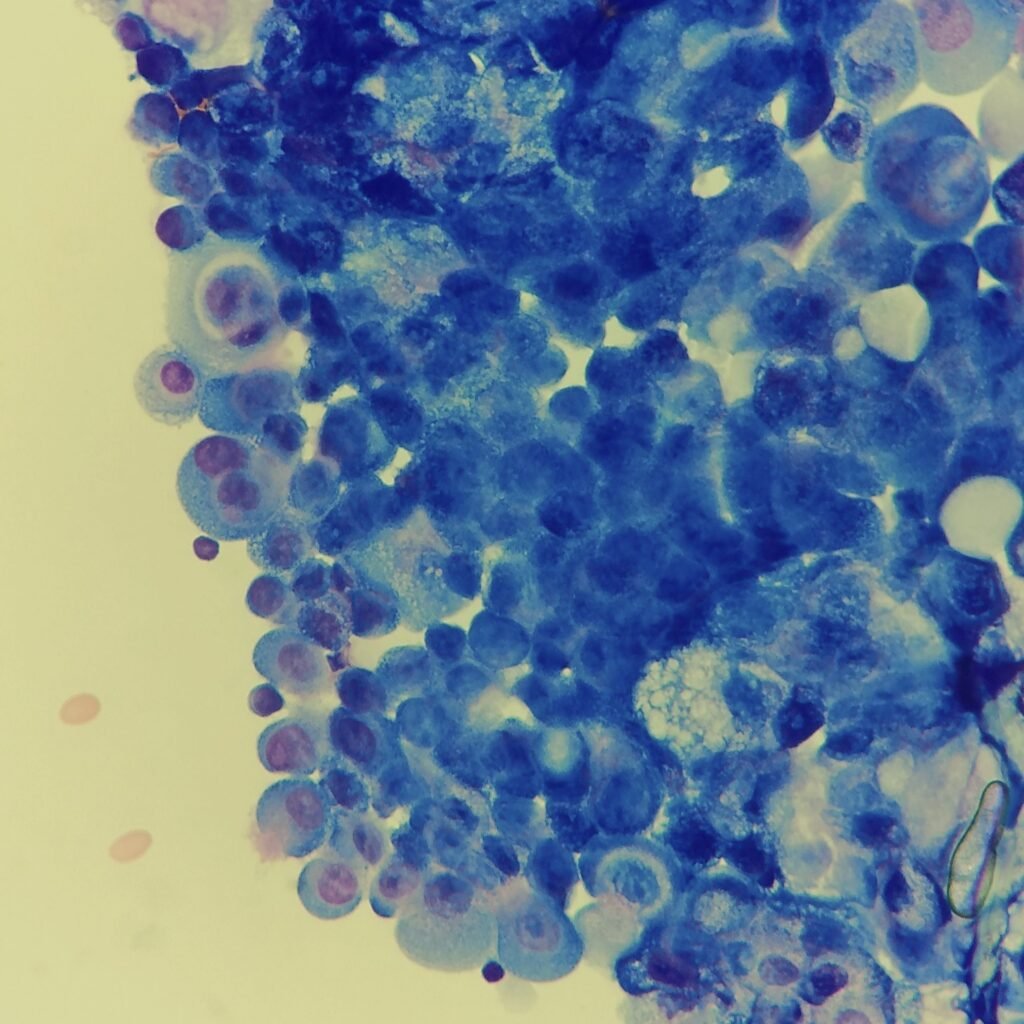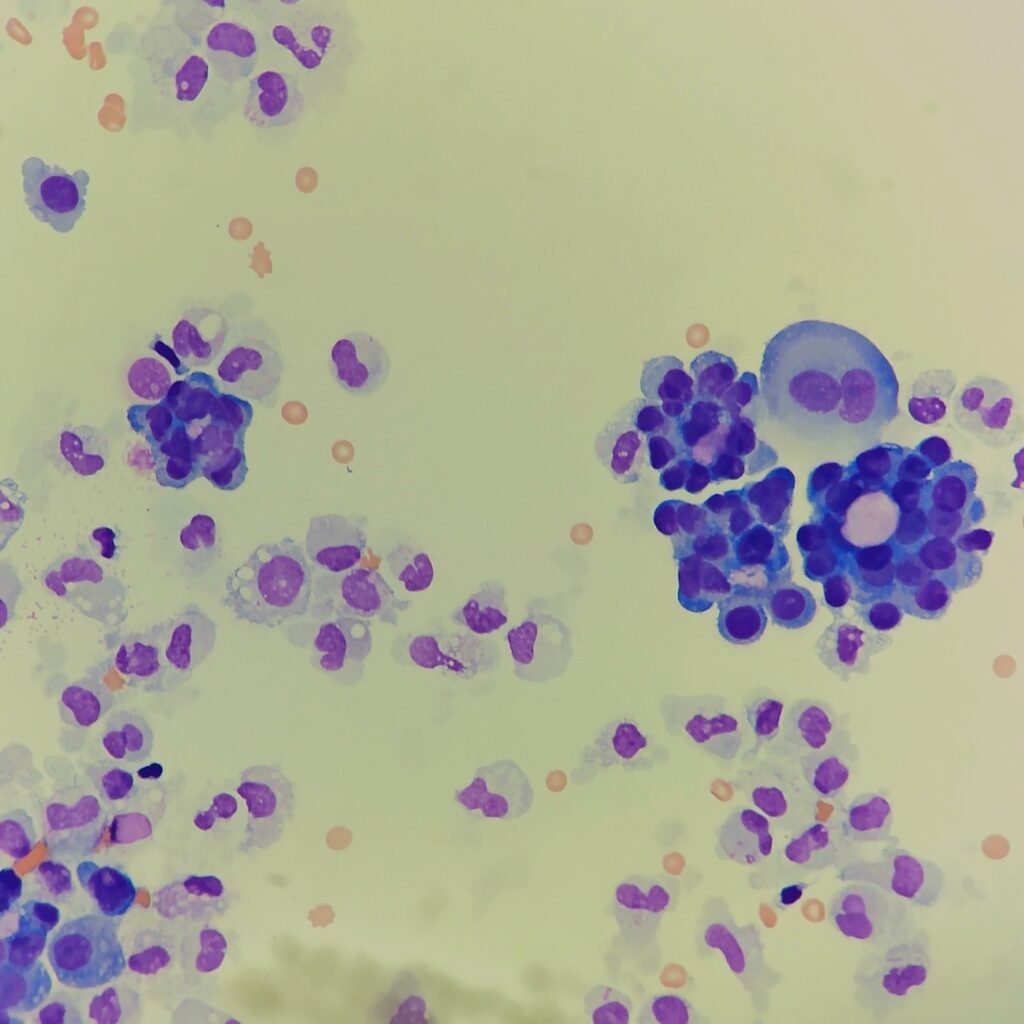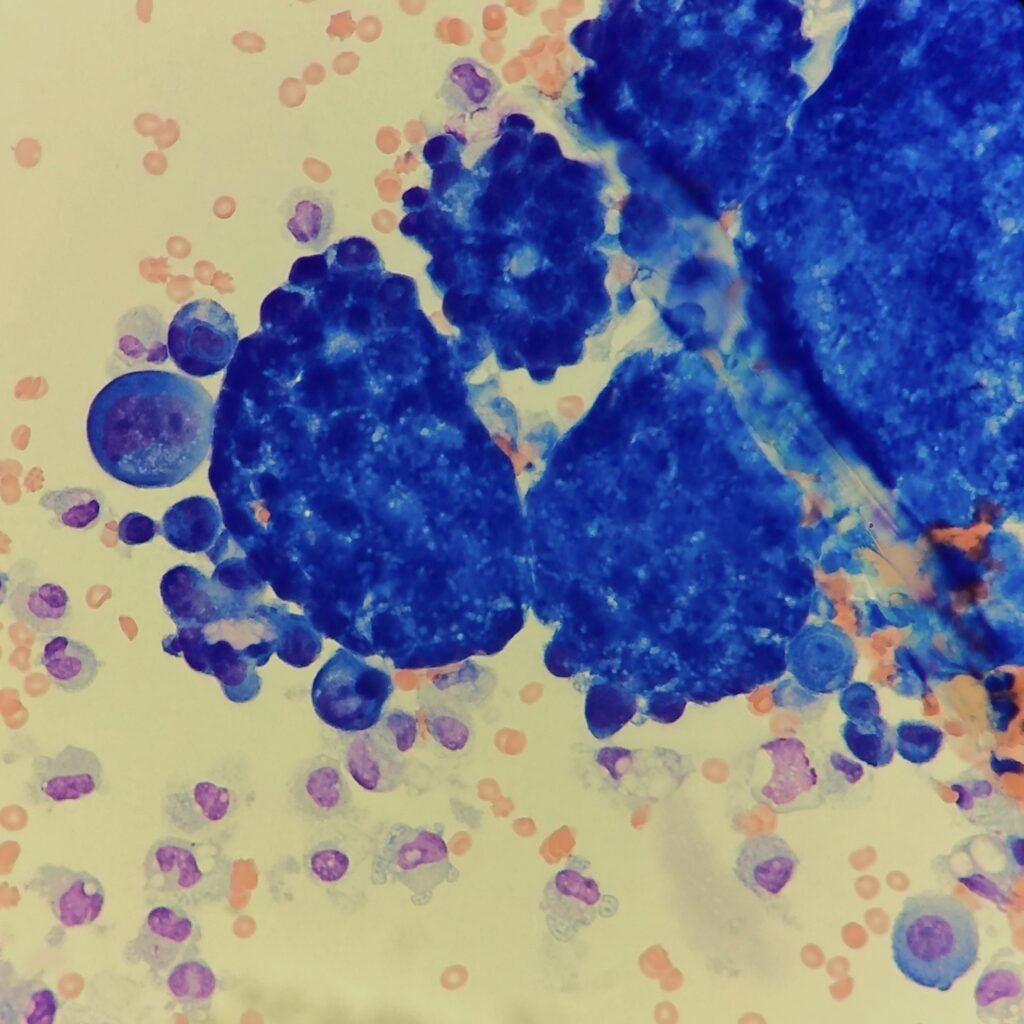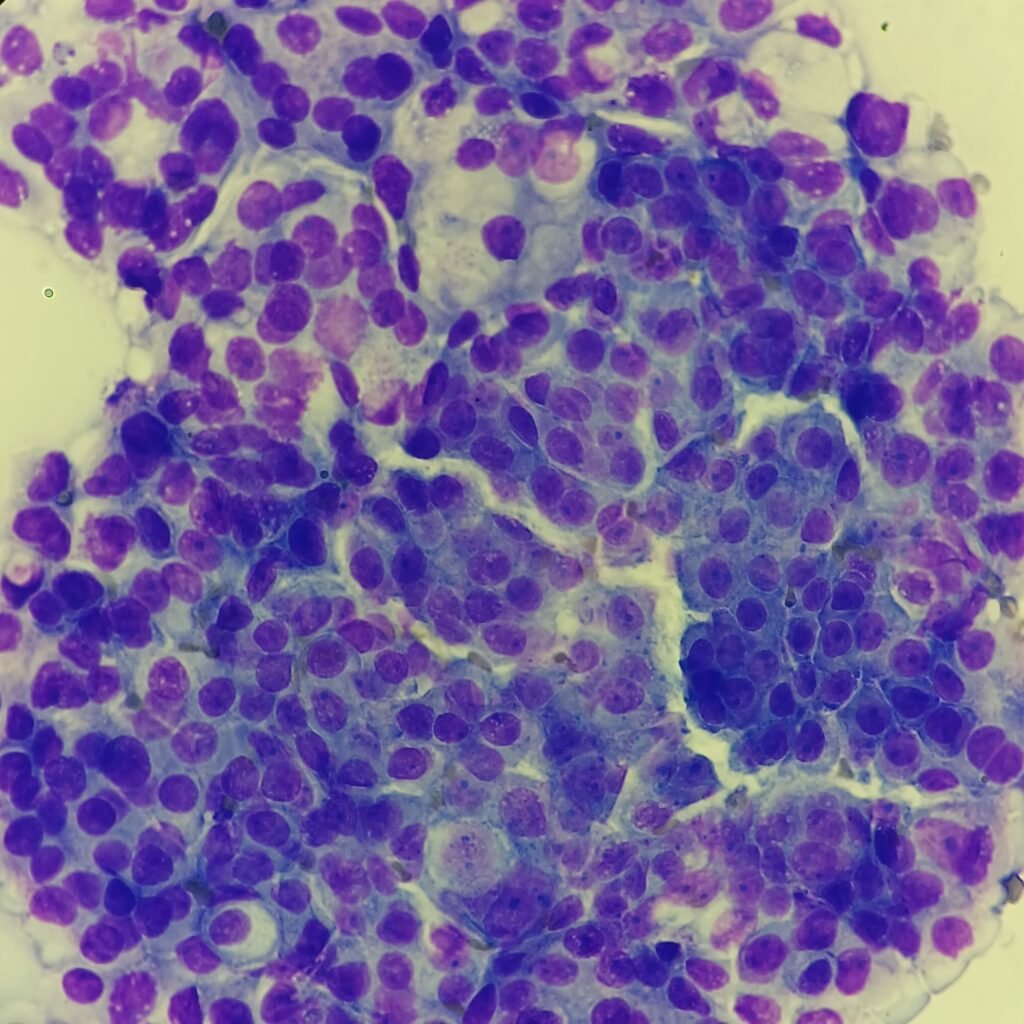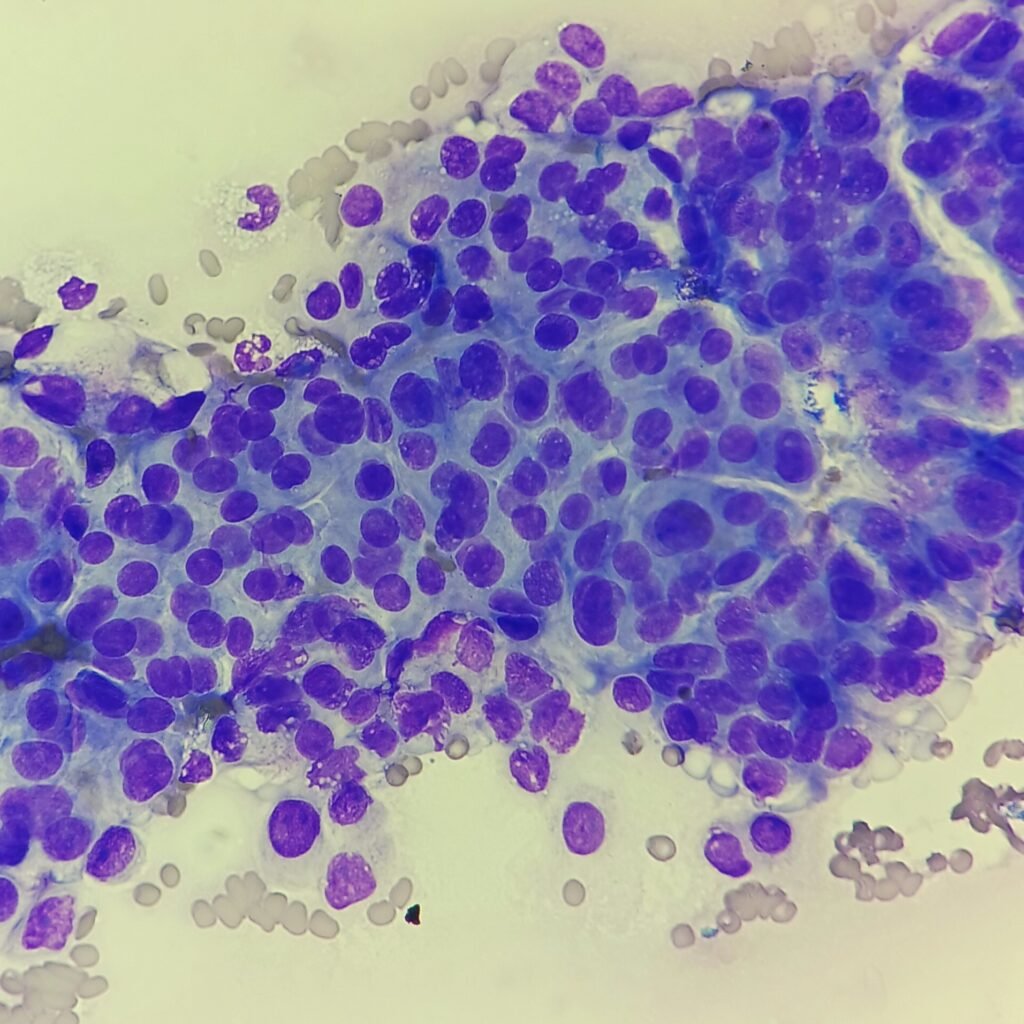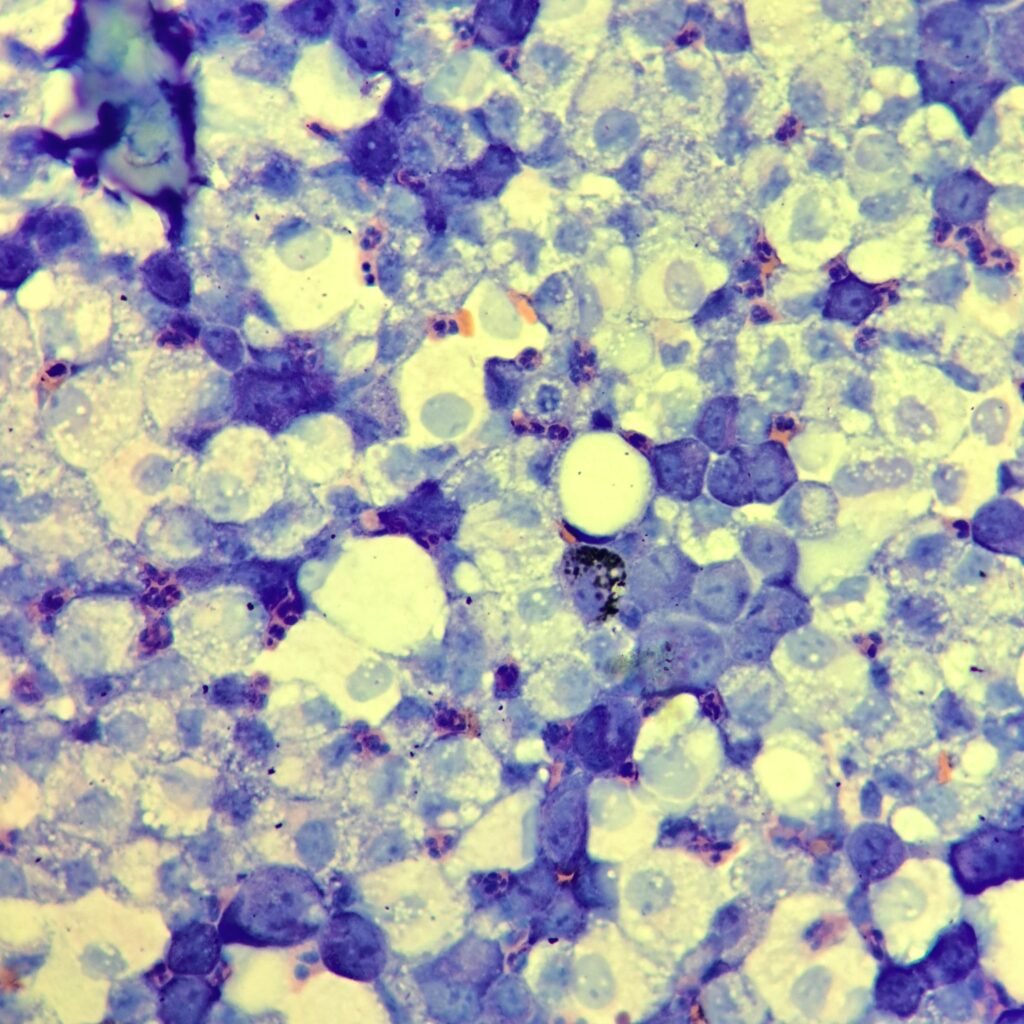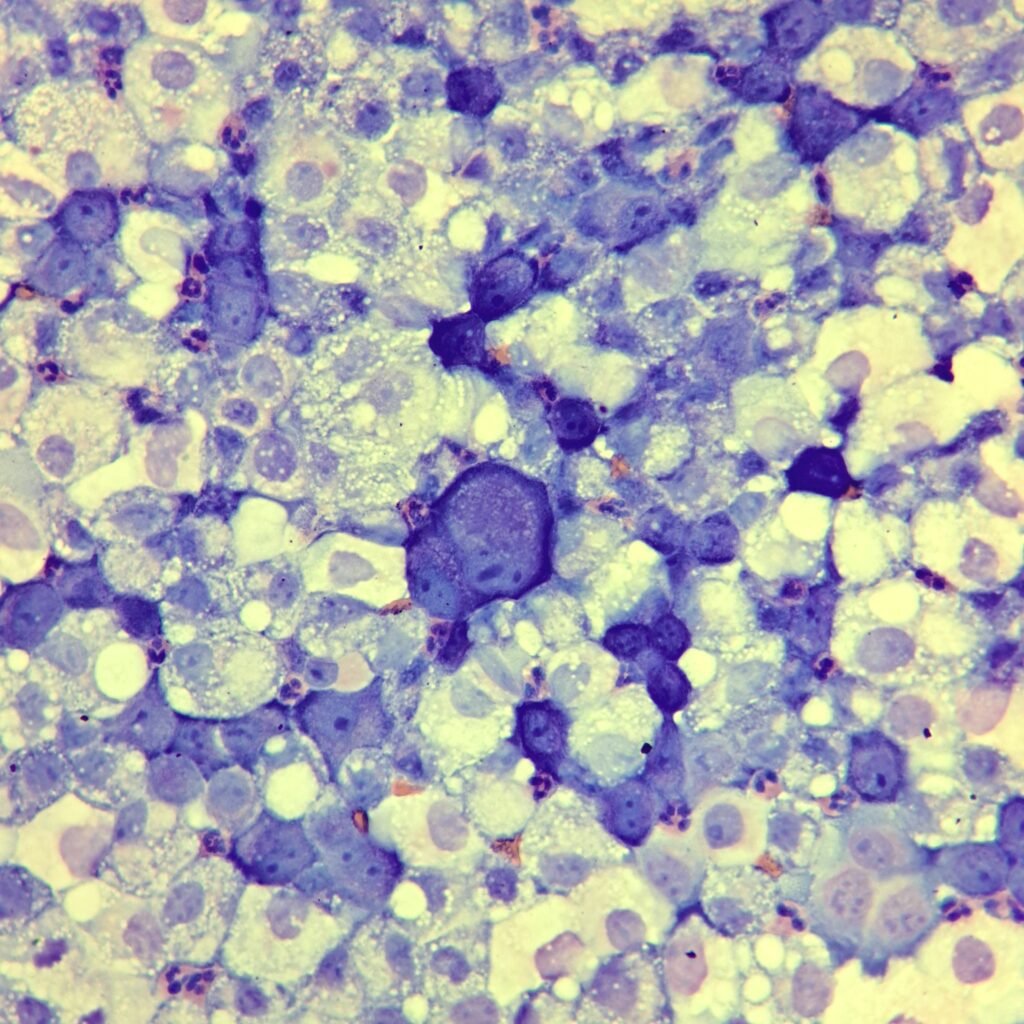Mast Cells
Larger and more granulated than a basophil but with similar function. Nucleus is round. Cytoplasm is filled with dark blue granules.
Increased amounts can be seen in Mast Cell Disease, parasitic infections, and allergic reactions.Increased amounts may be seen with foreign body or allergic reactions.
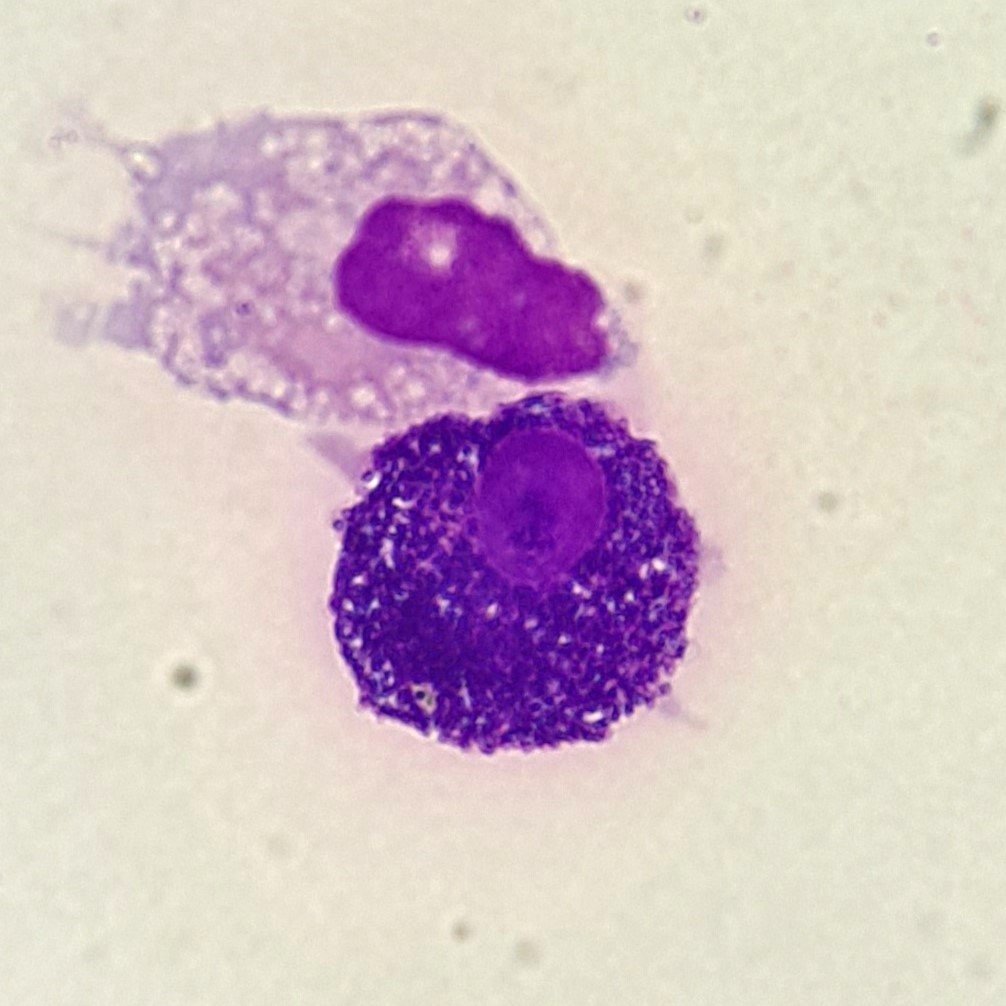
More Images
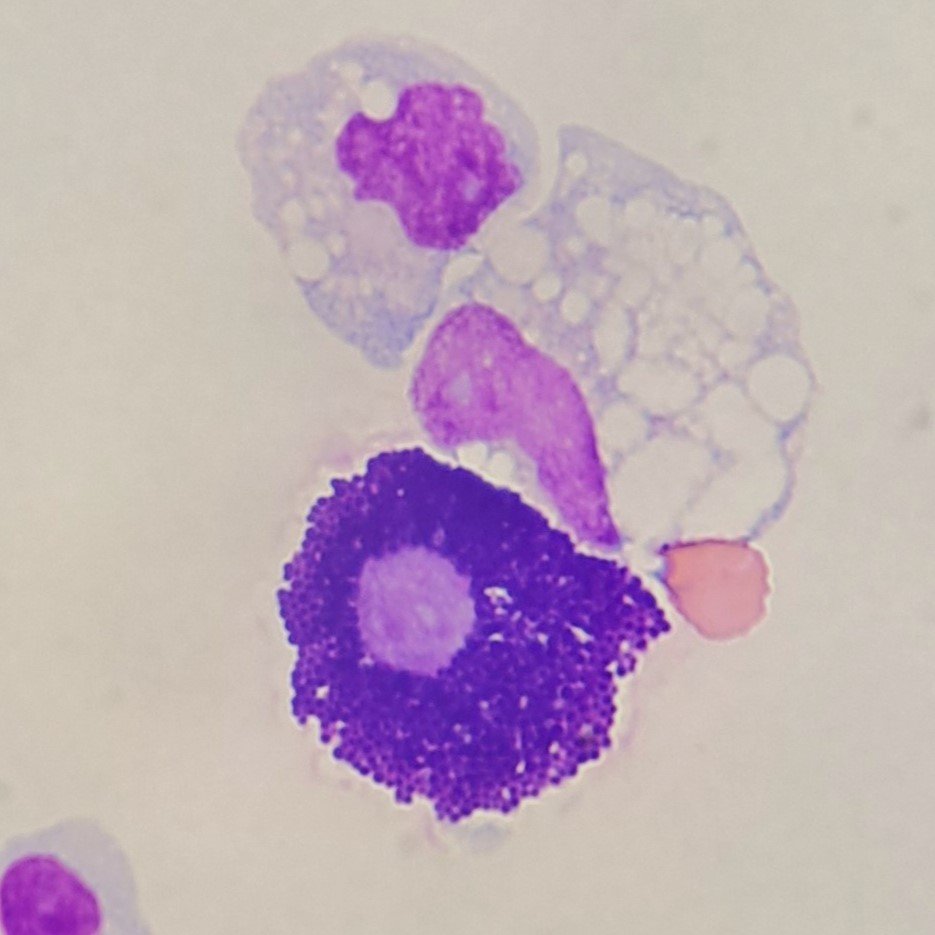

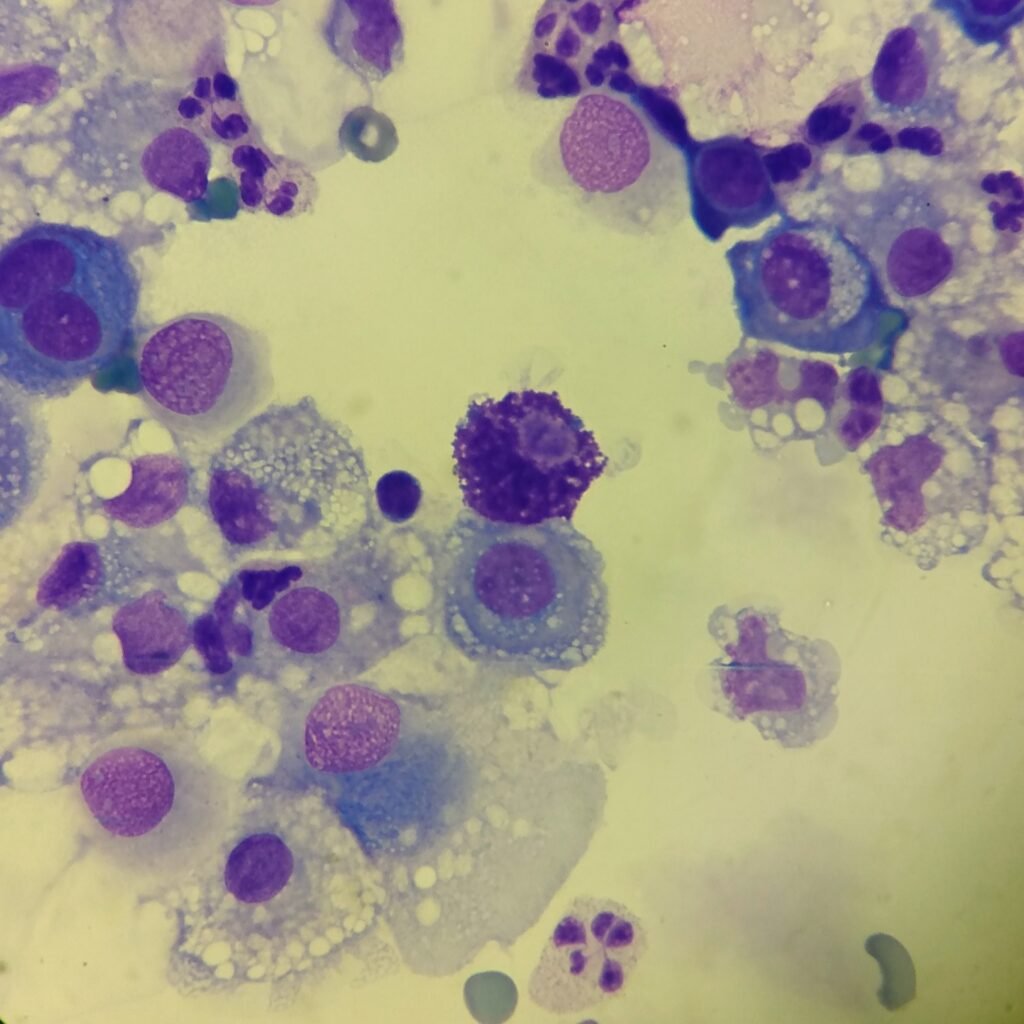
Mesothelial Cells
Lining cells seen in pleural, peritoneal, and pericardial fluids..
Described as having a “fried egg” appearance. Cells may be seen in clumps but “windows” between cells still allows for individual counting.
Cell may be multinucleated. Nucleus is round to oval with smooth borders and evenly distributed chromatin. Nucleloli are usually present.
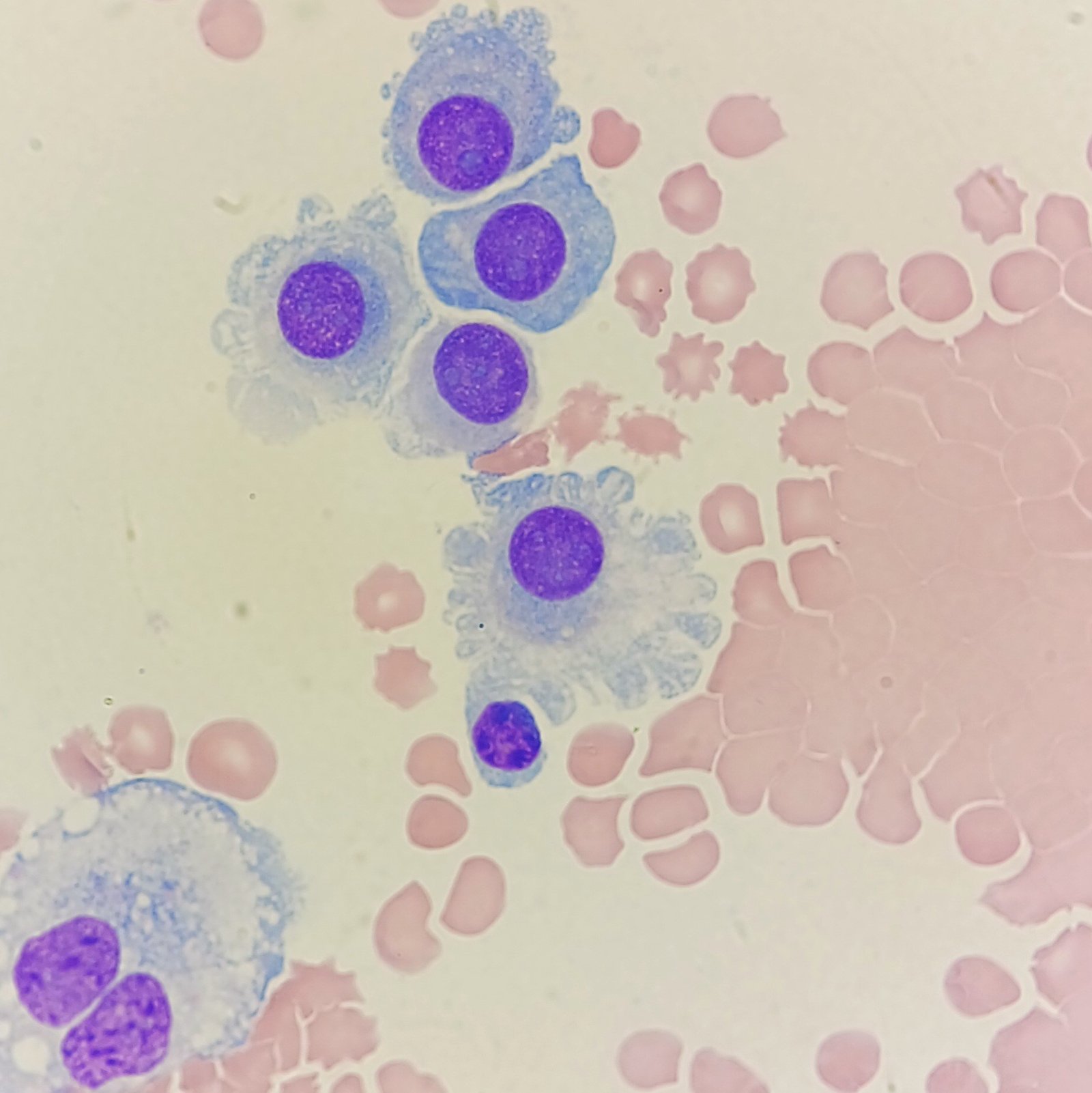
More Images
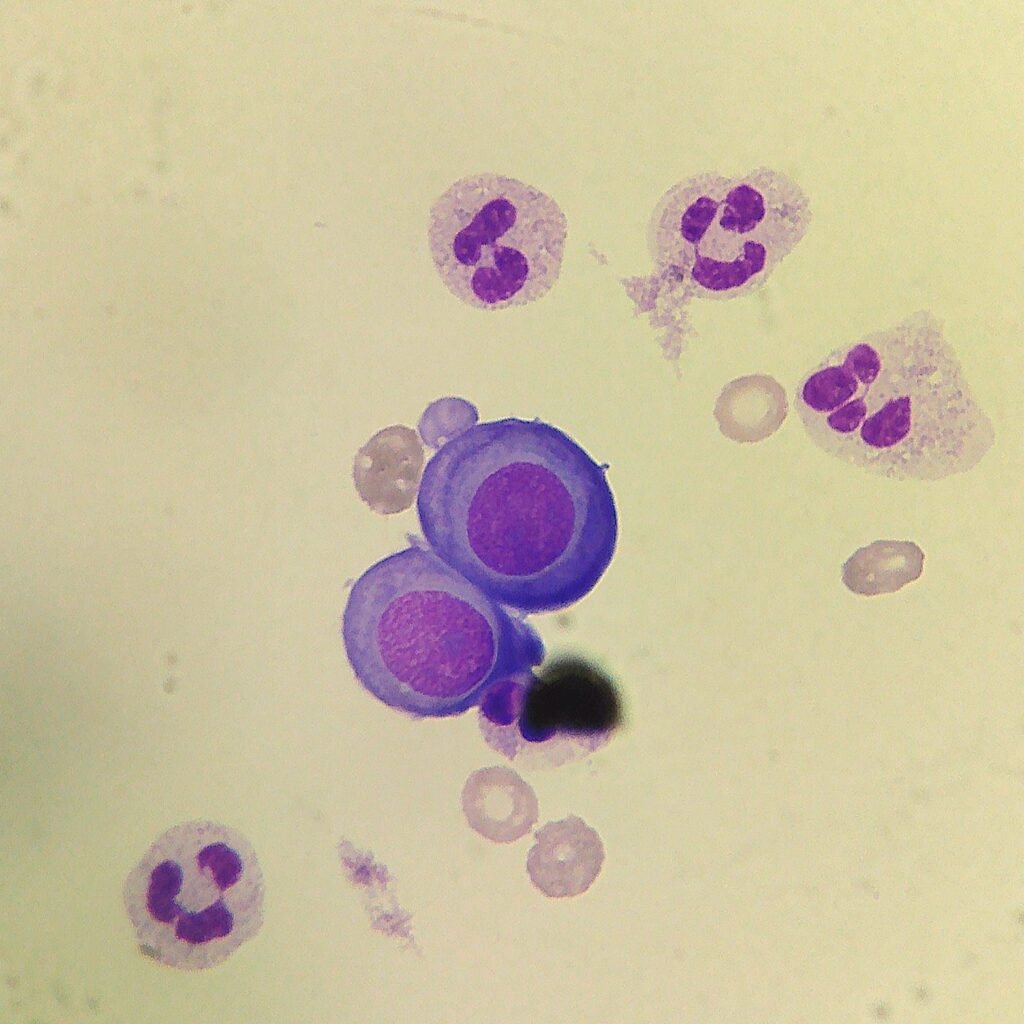
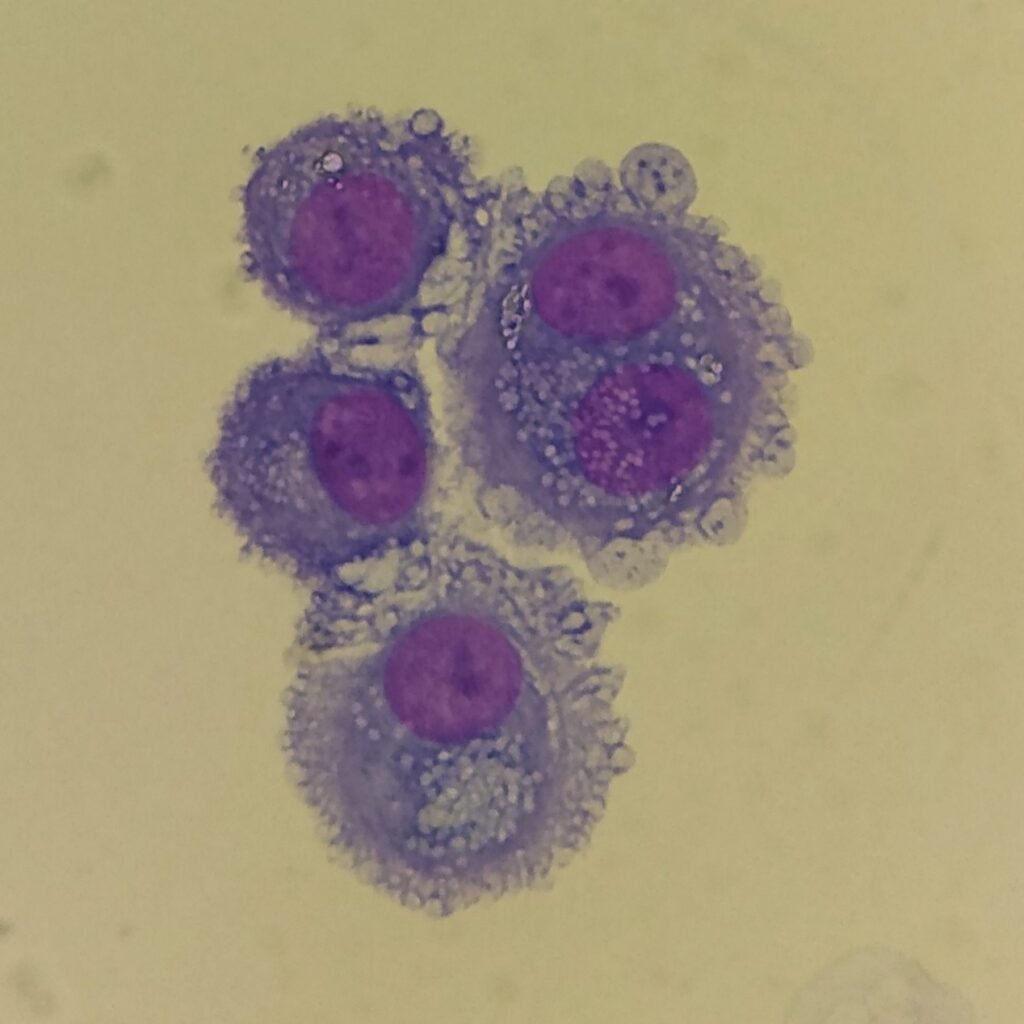
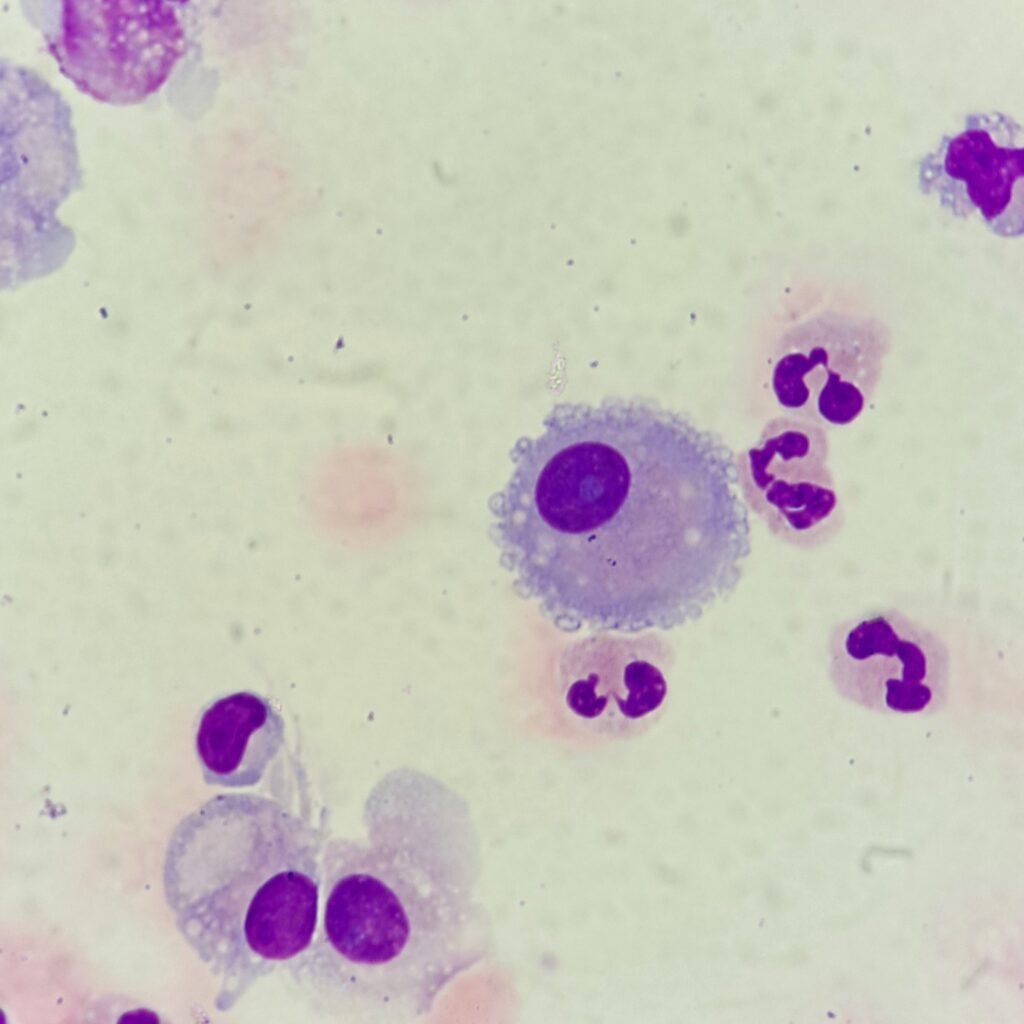
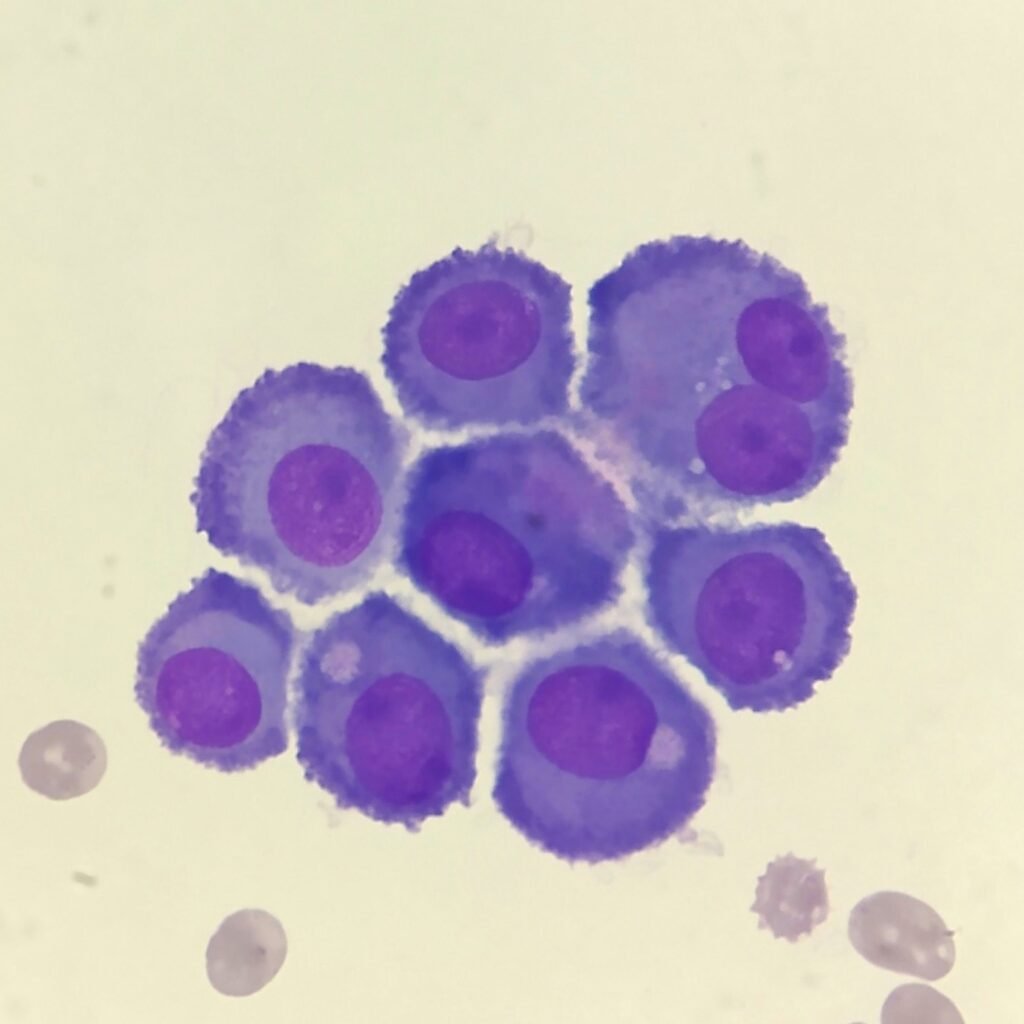
Synovial Lining Cells (Synoviocyte)
Lining cell seen in synovial fluid. Visually similar to mesothelial cell.
Nucleus is round to oval with smooth borders. Nucleoli may be present.
Cytoplasm may have irregular edges or vacuoles.
Not clinically significant.
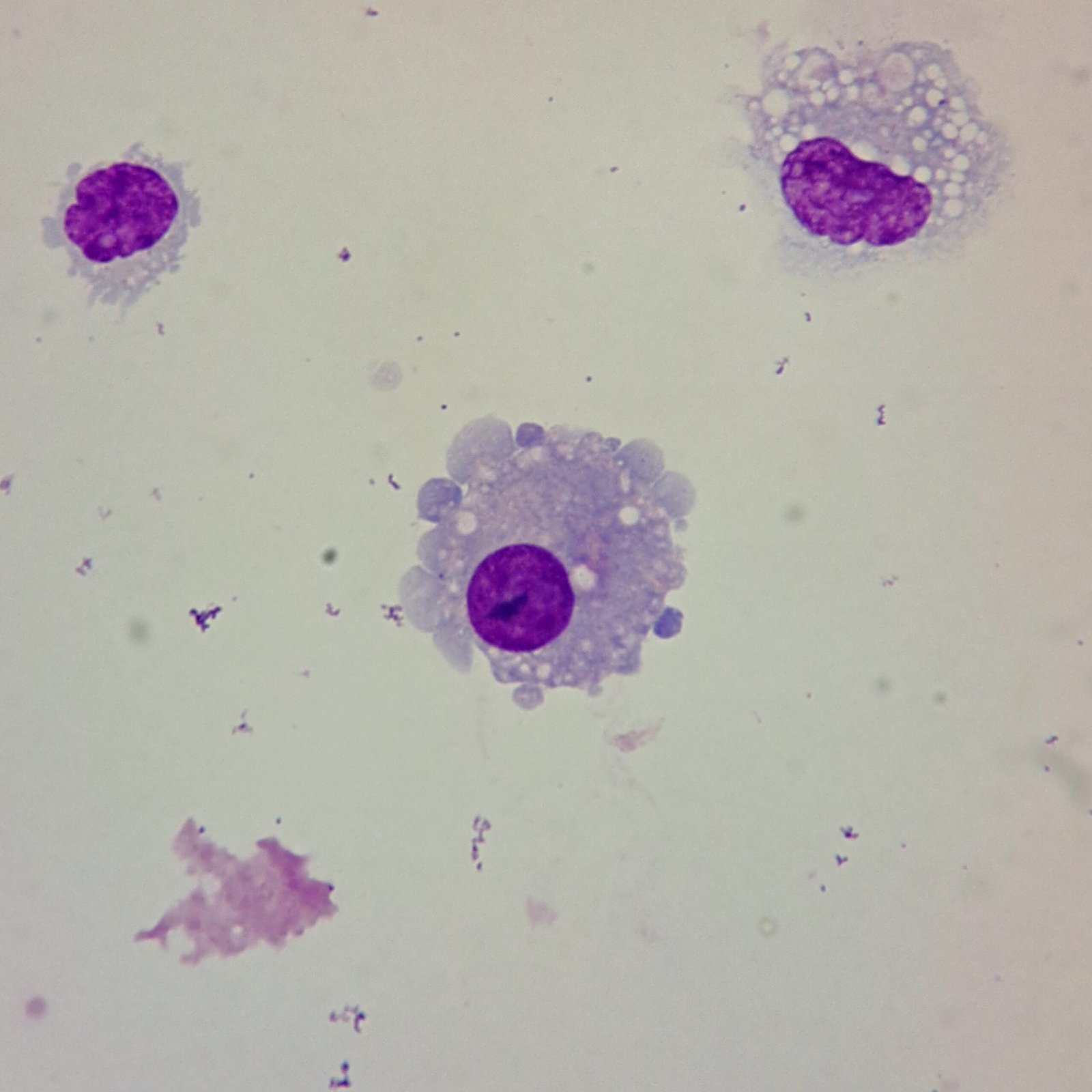
More Images
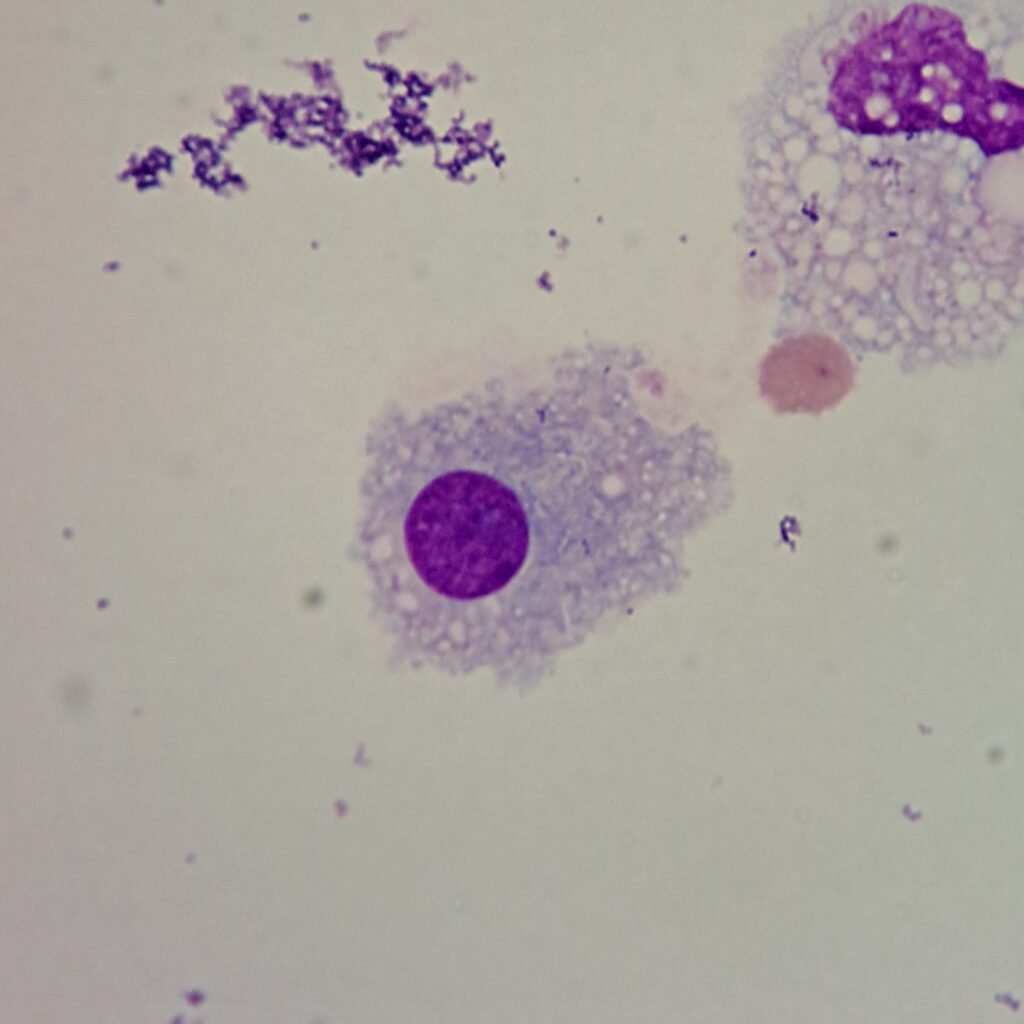
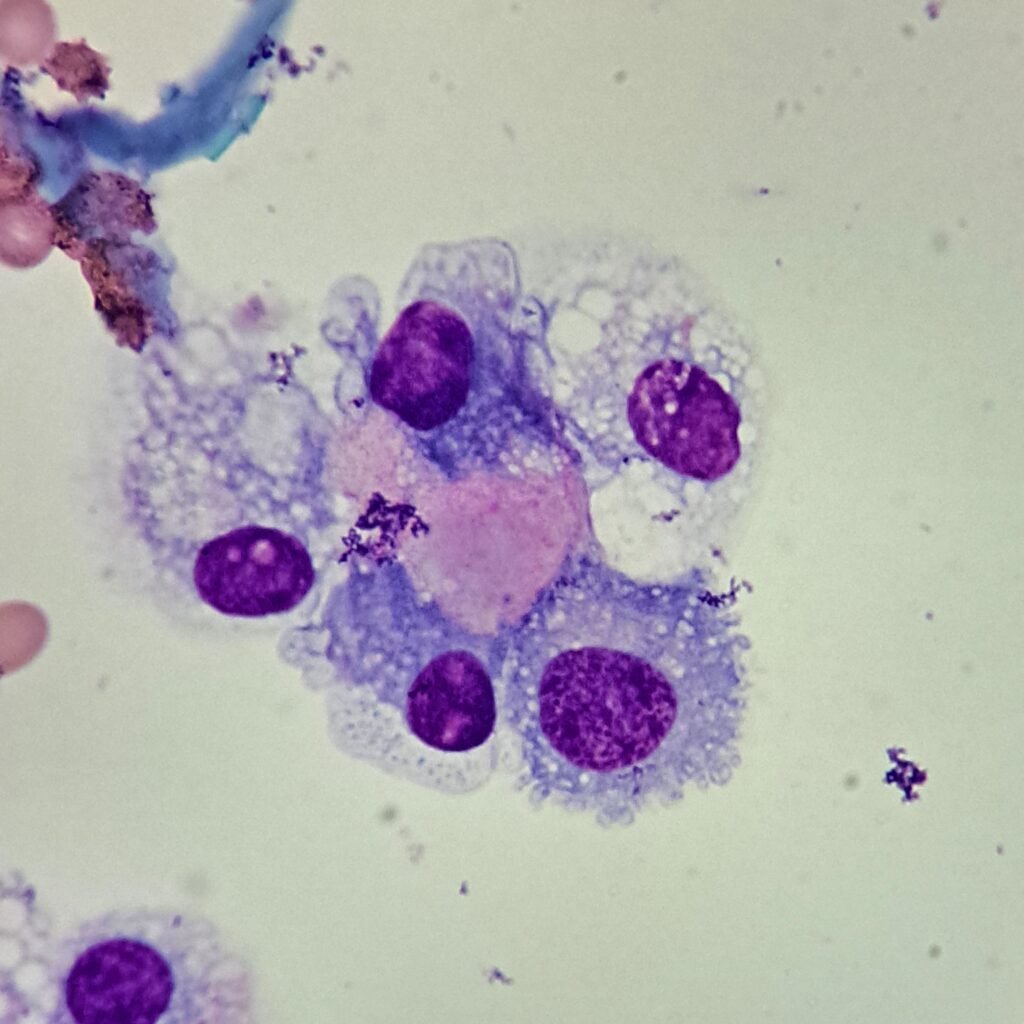
Blast Cells
Cytocentrifugation may exaggerate cellular features, such as larger nucleoli or irregular nuclear shape.
Chromatin is fine with one or more nucleoli.
More Images
Mitotic Figures
Chromosomal structures are visible in the nucleus, which can cause a daisy-like appearance.
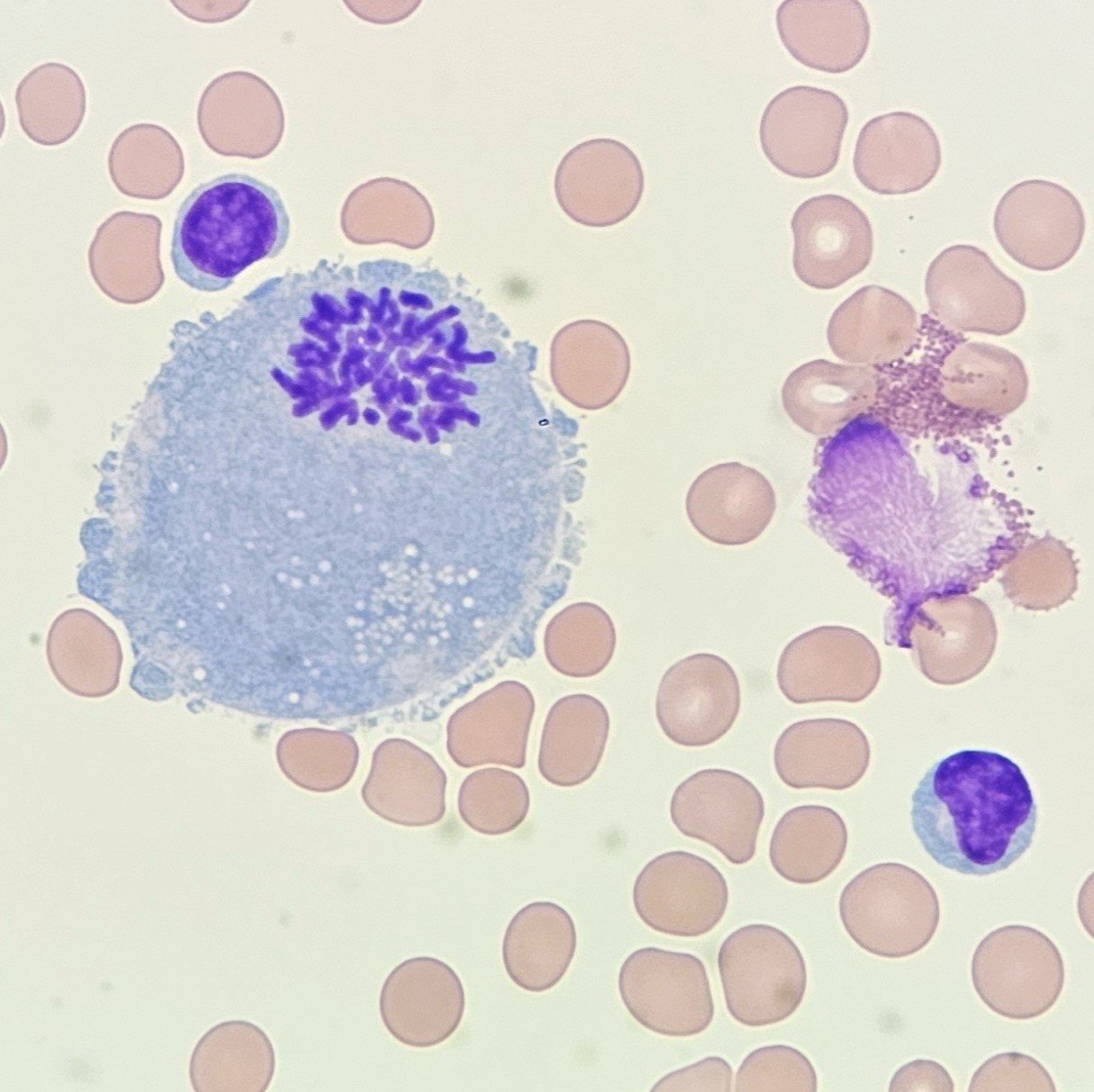
More Images
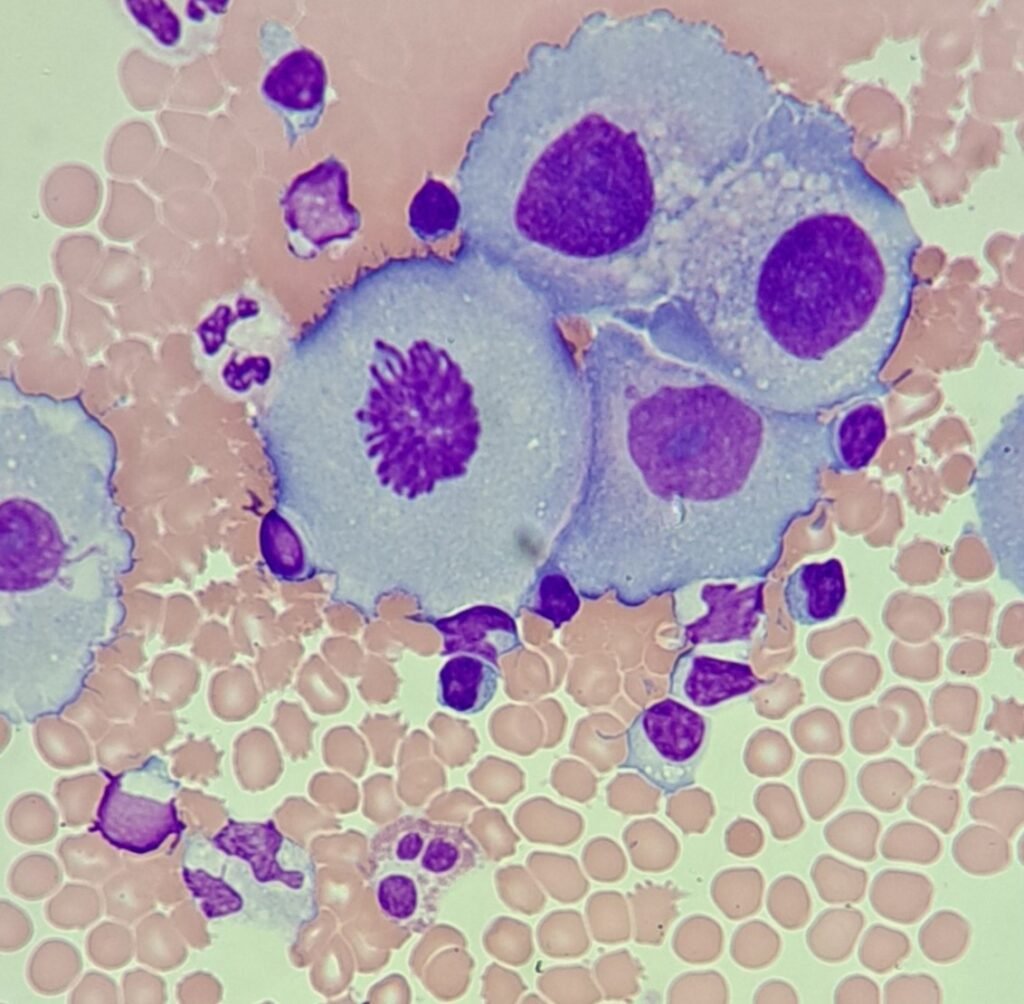
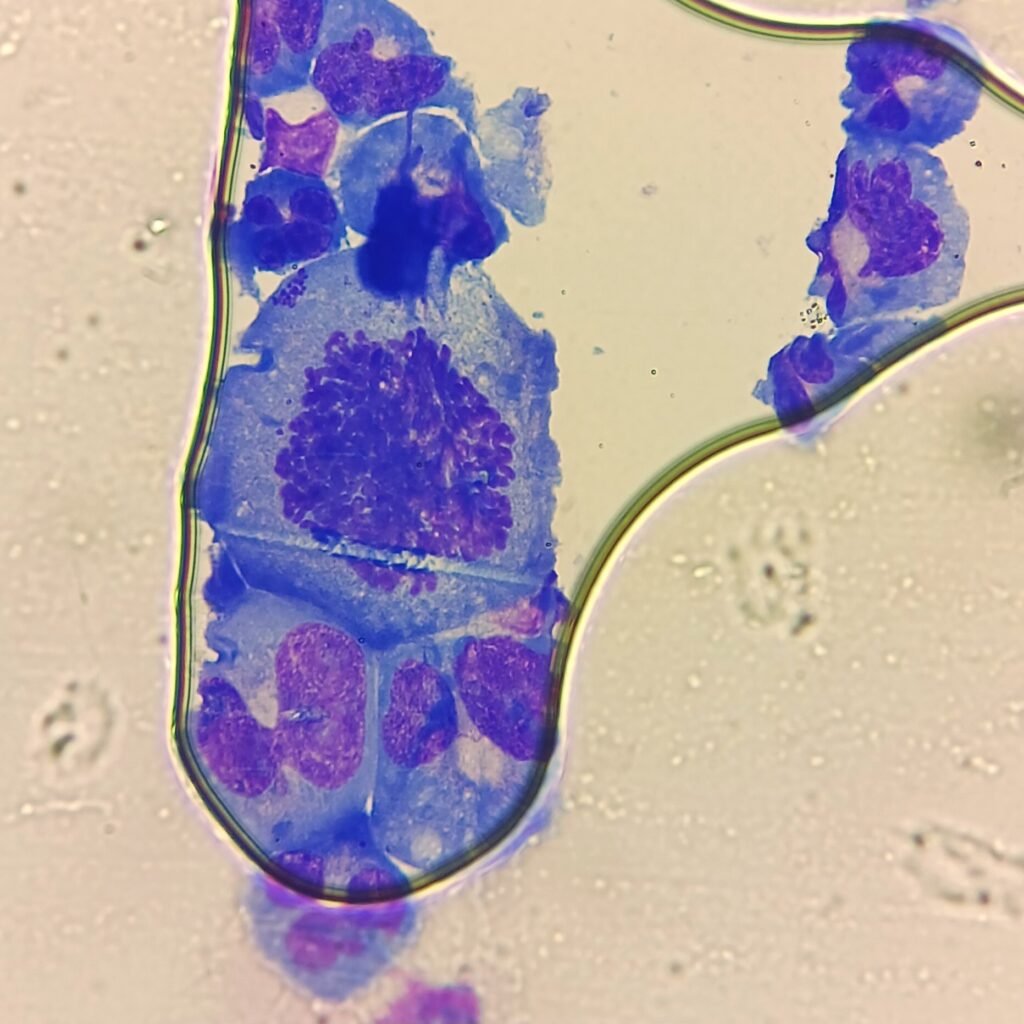
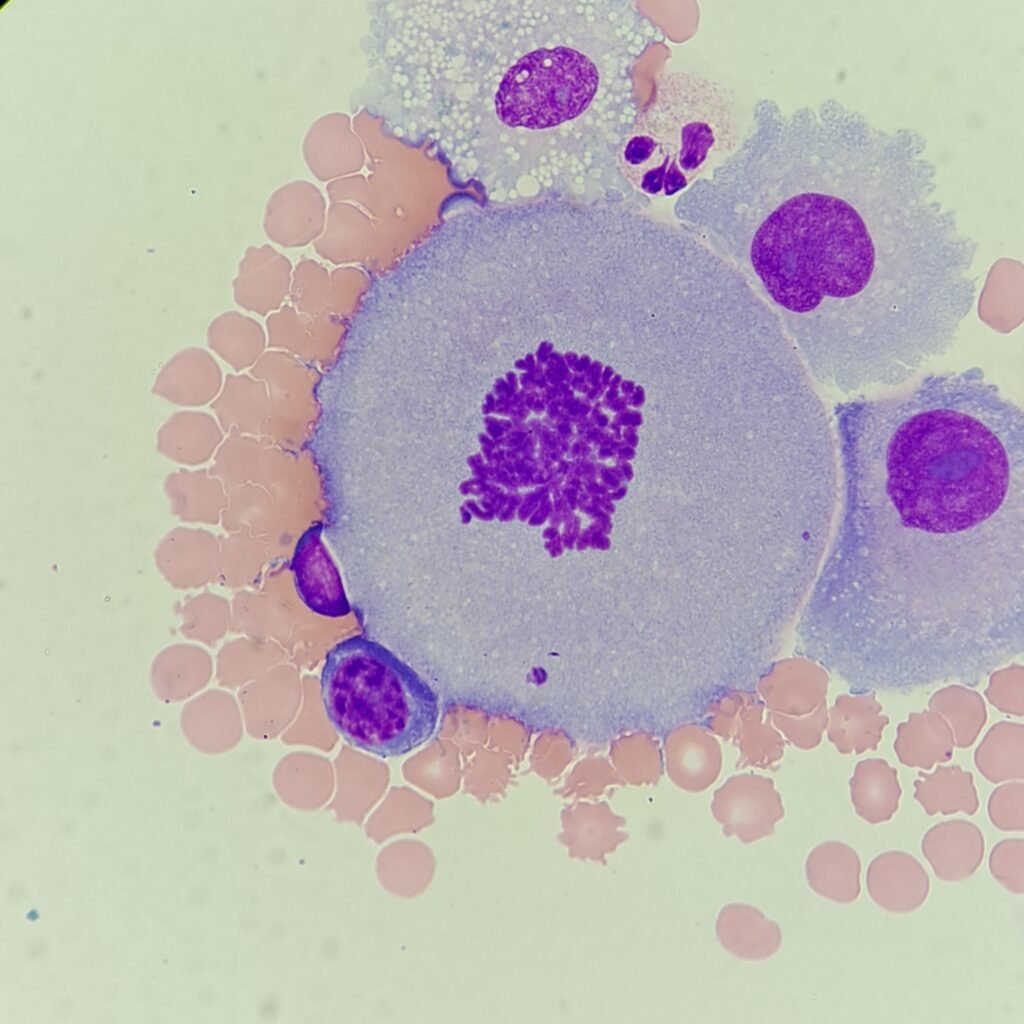
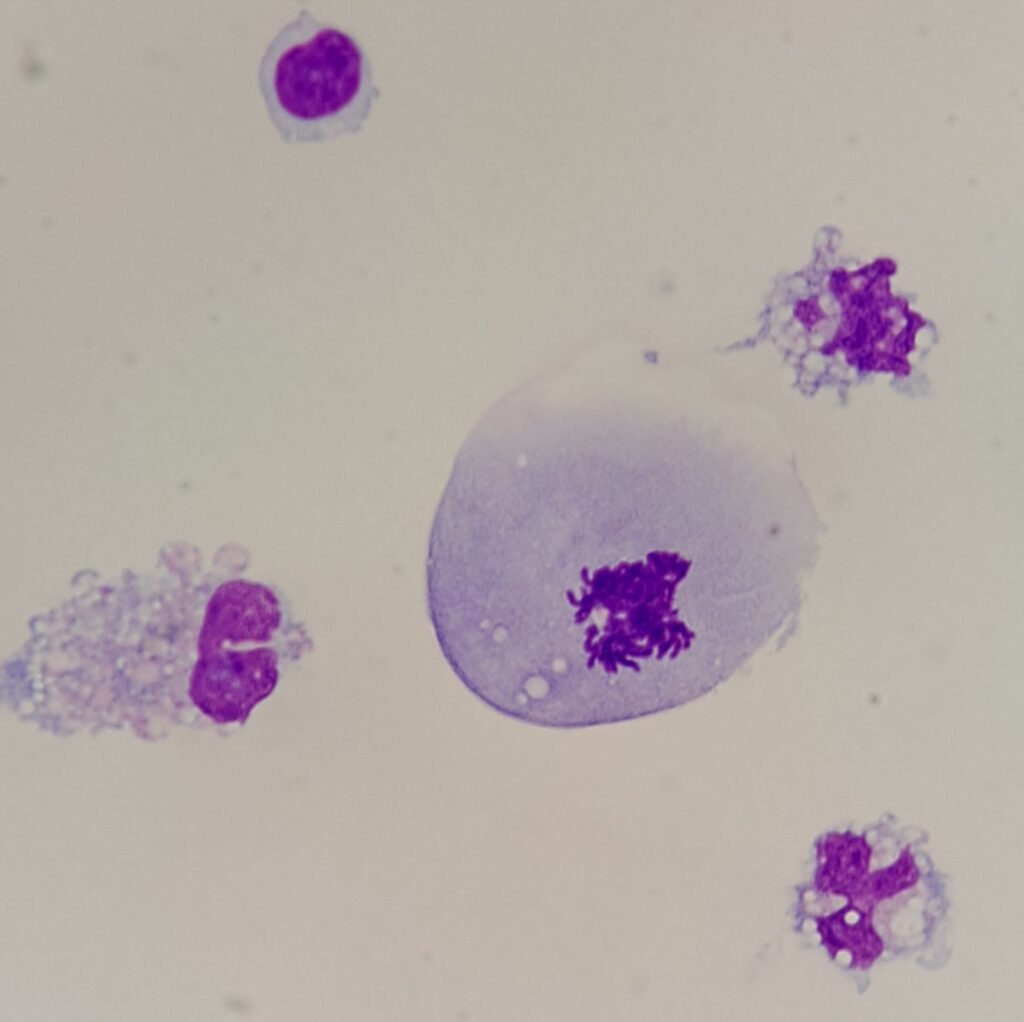
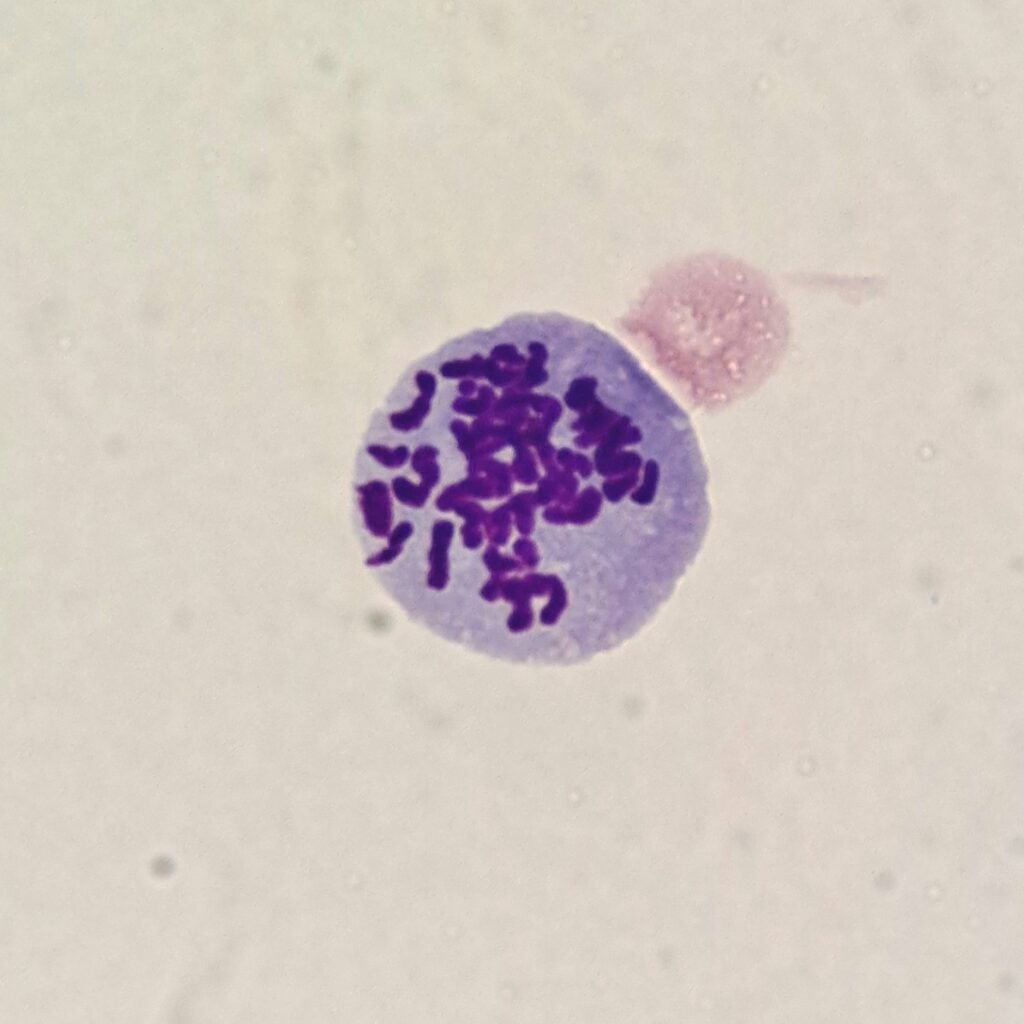
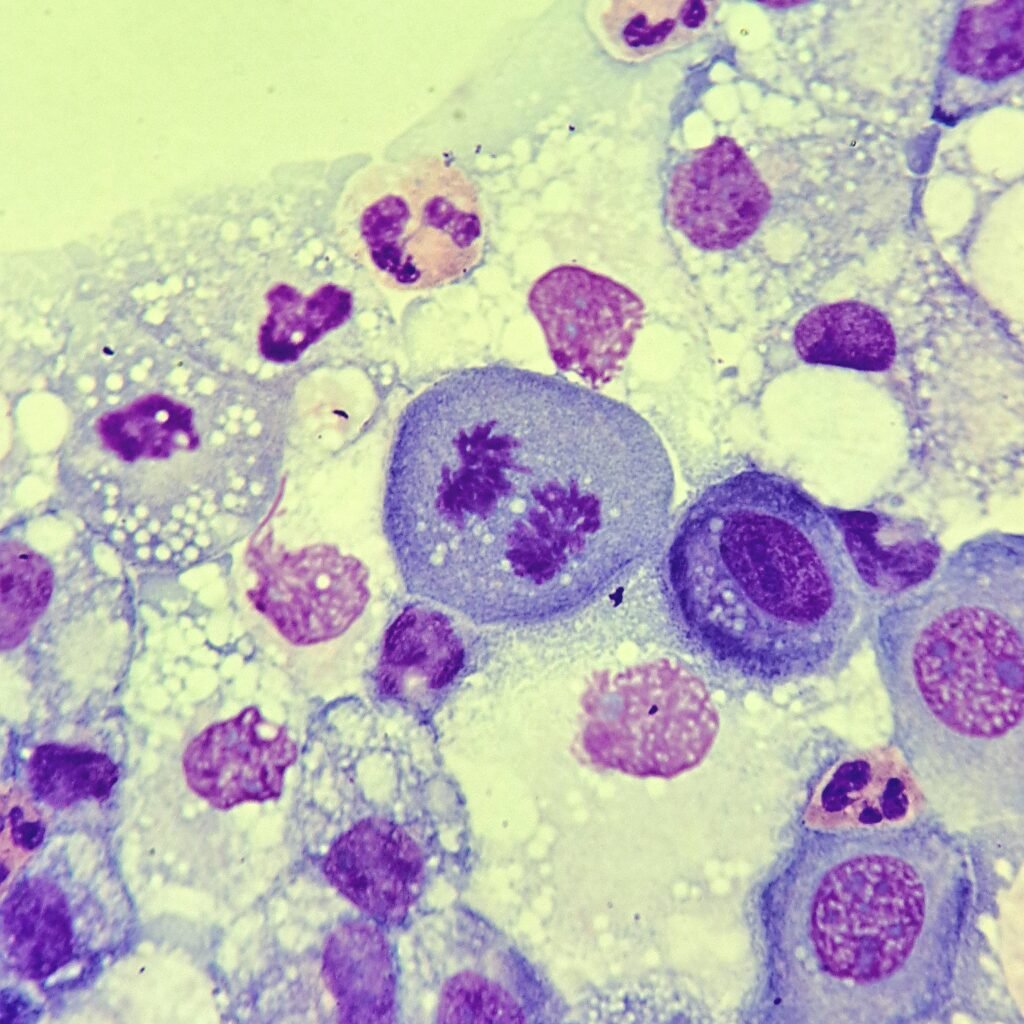

Malignant Cells
Appearance of malignant cells can vary widely. However, they commonly have one or more of the following features: Cells clumping together with no discernable borders between or one giant cell with many nuclei, Dark-staining, 3-D appearance, irregular nulei or chromatin pattern, etc.
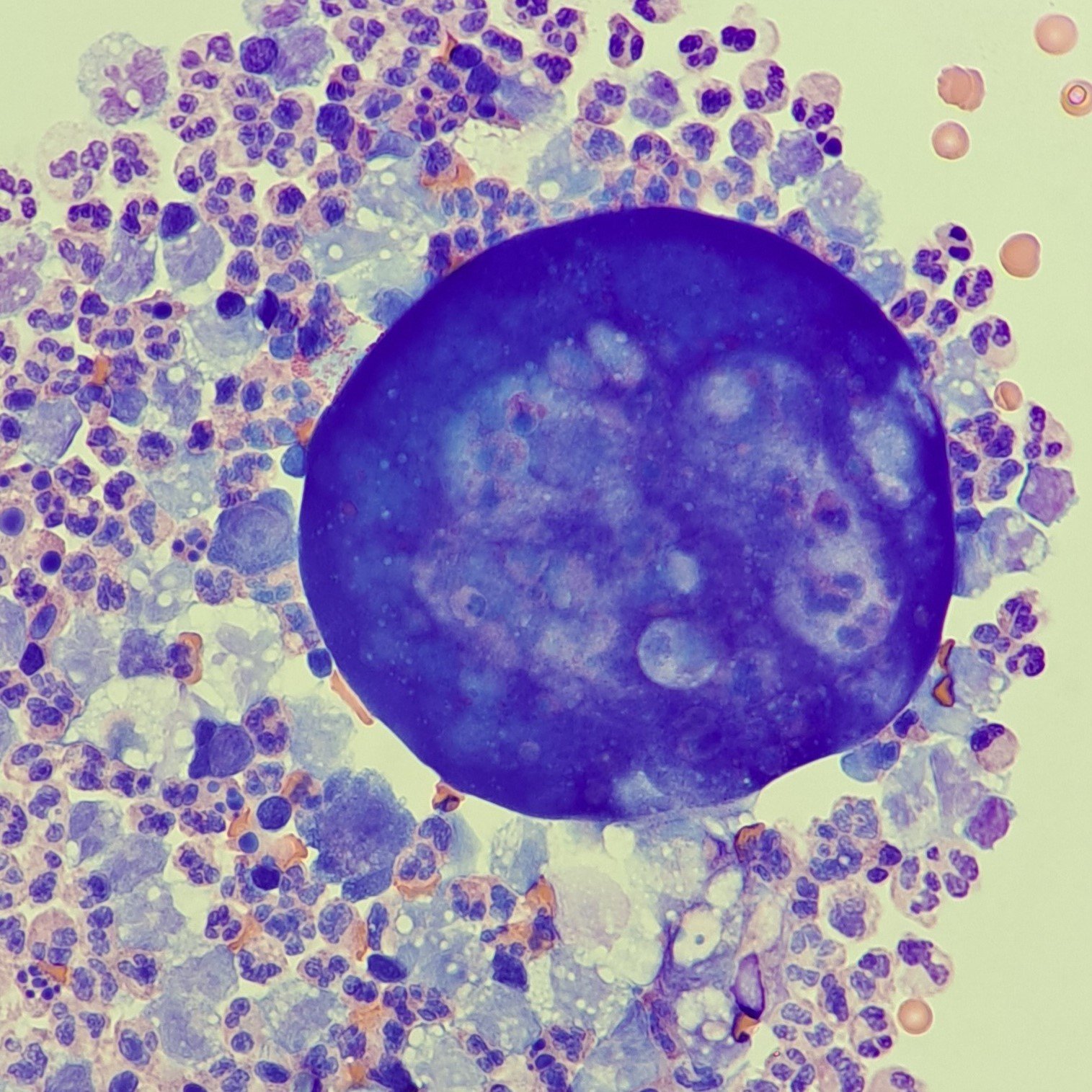
More Images

